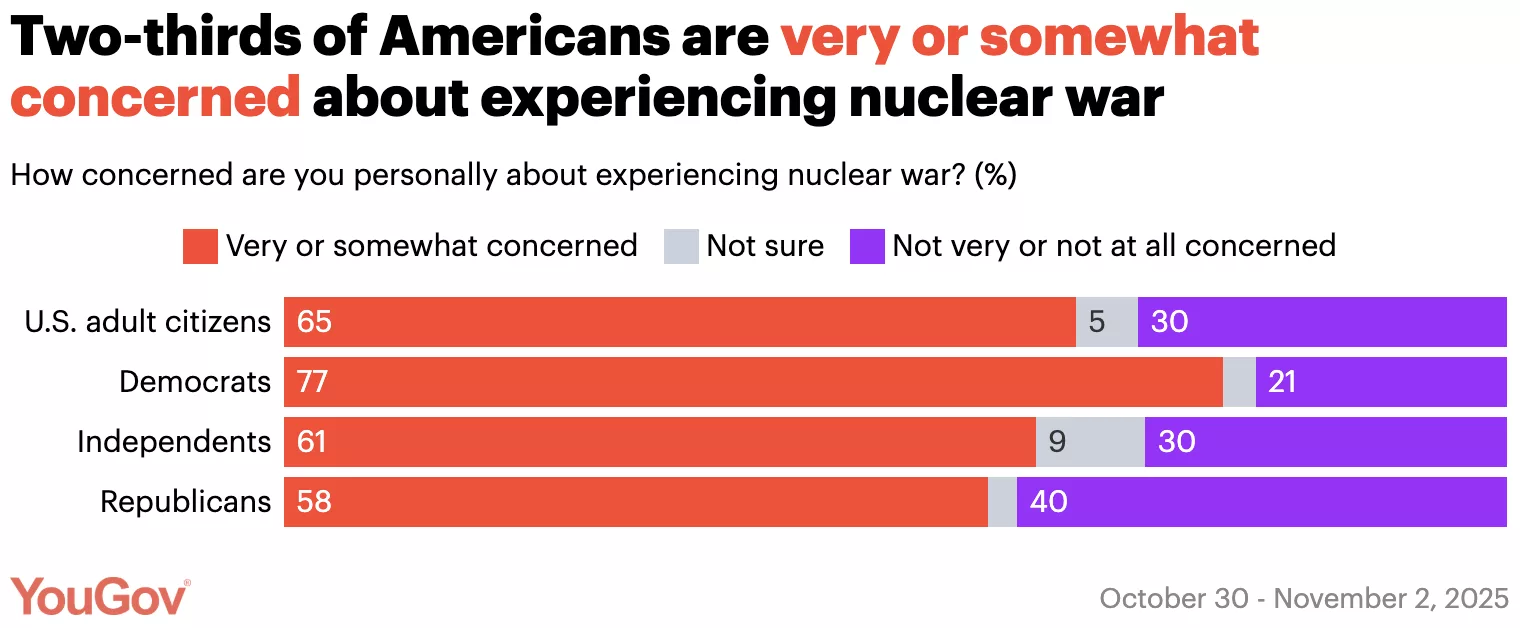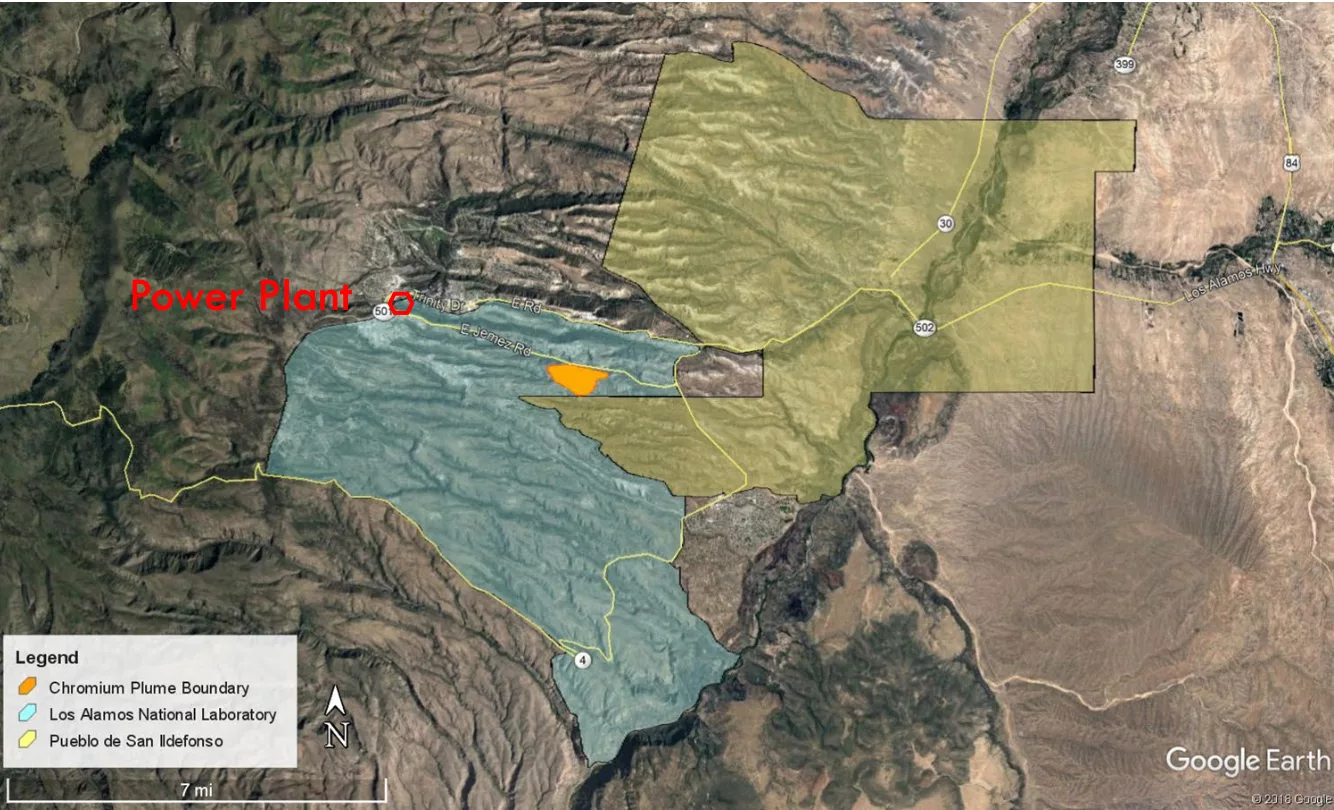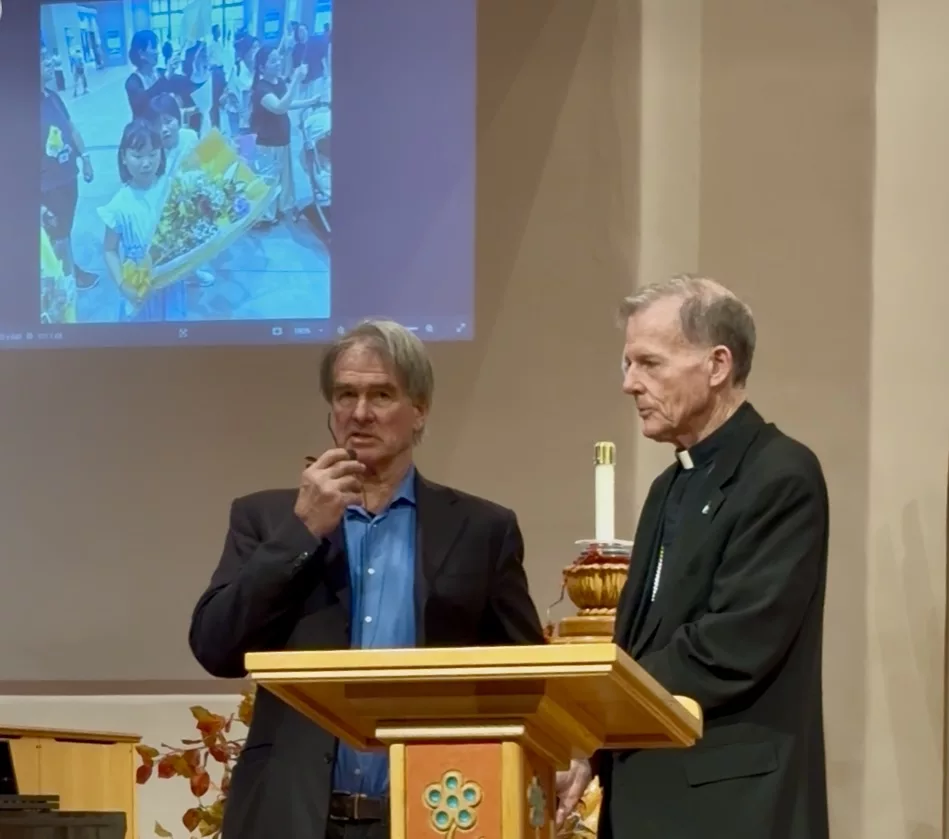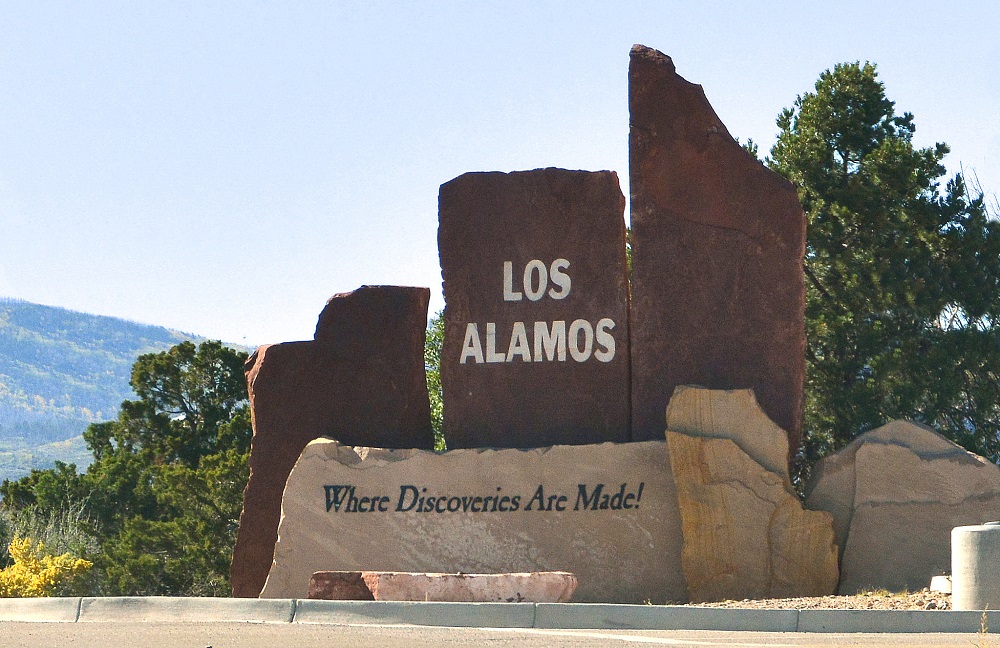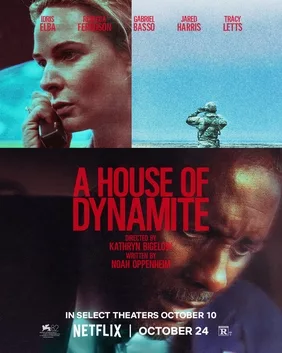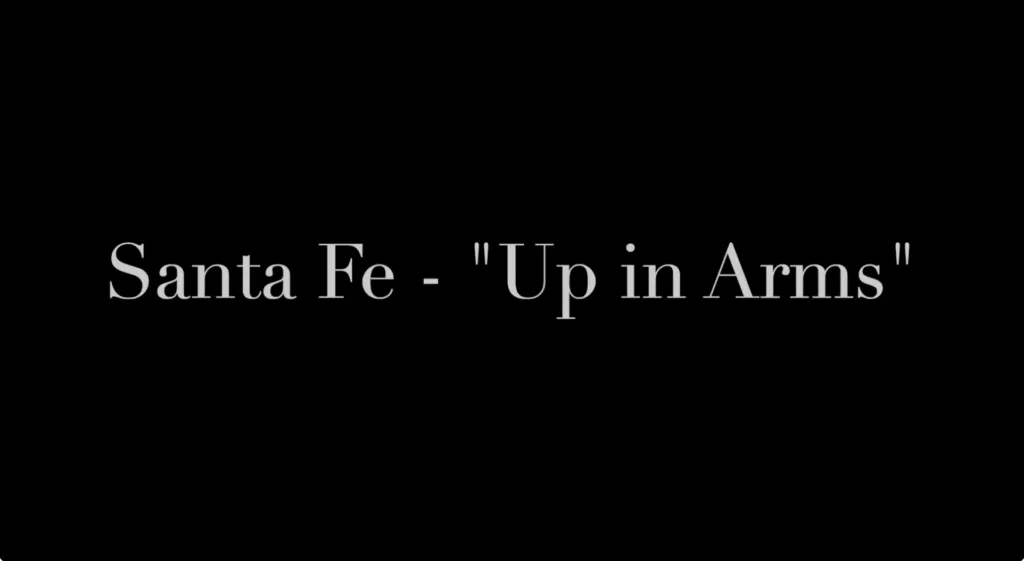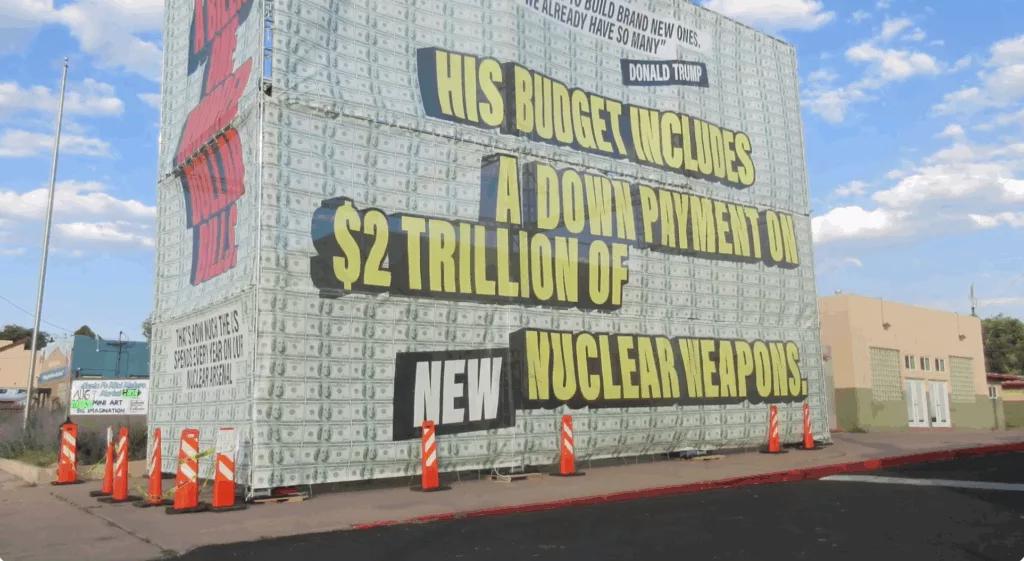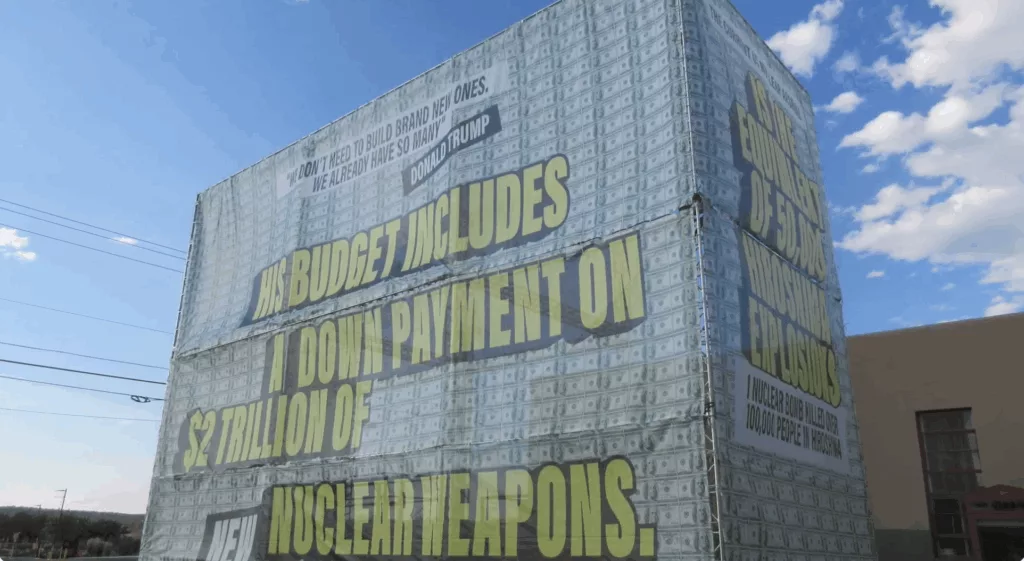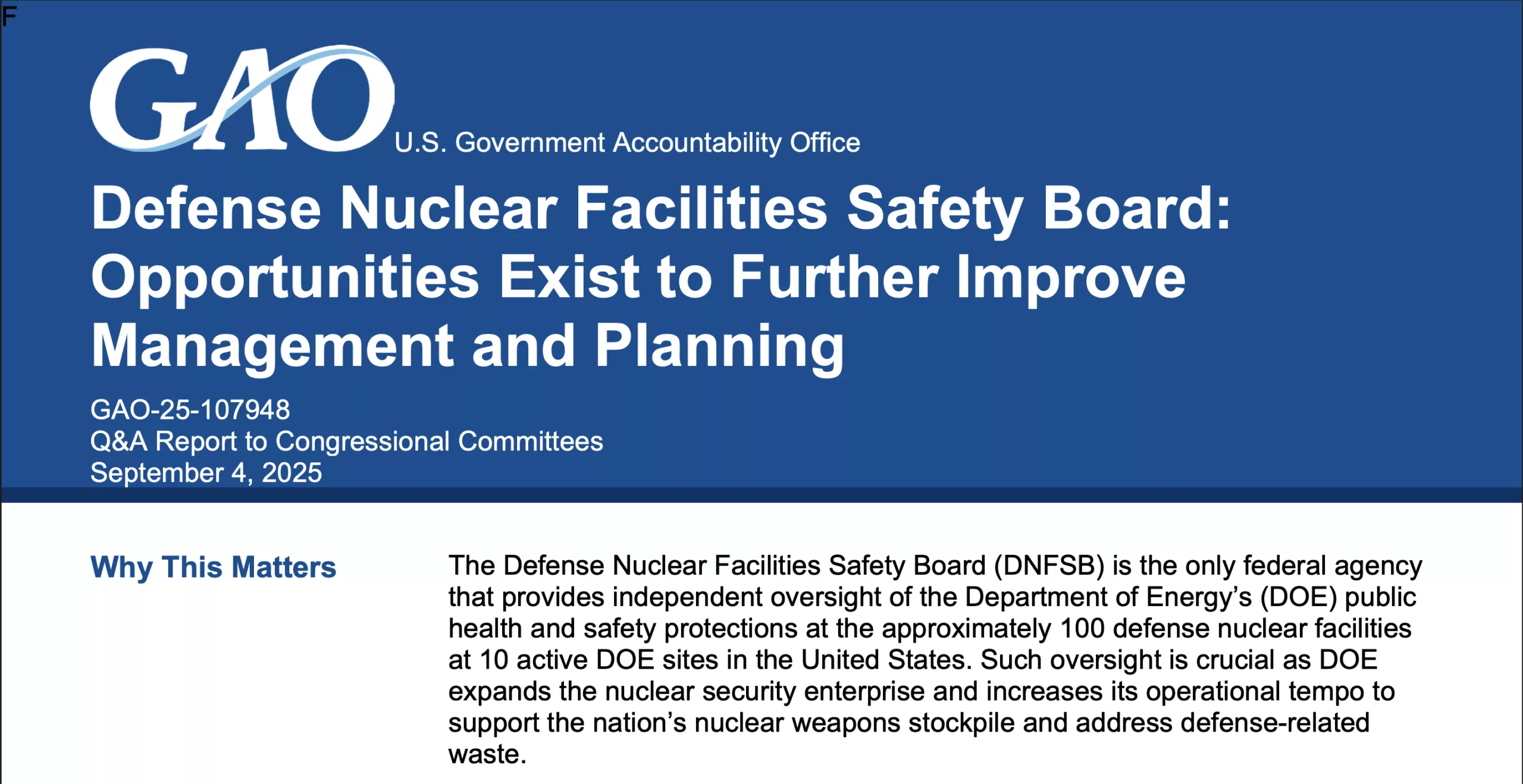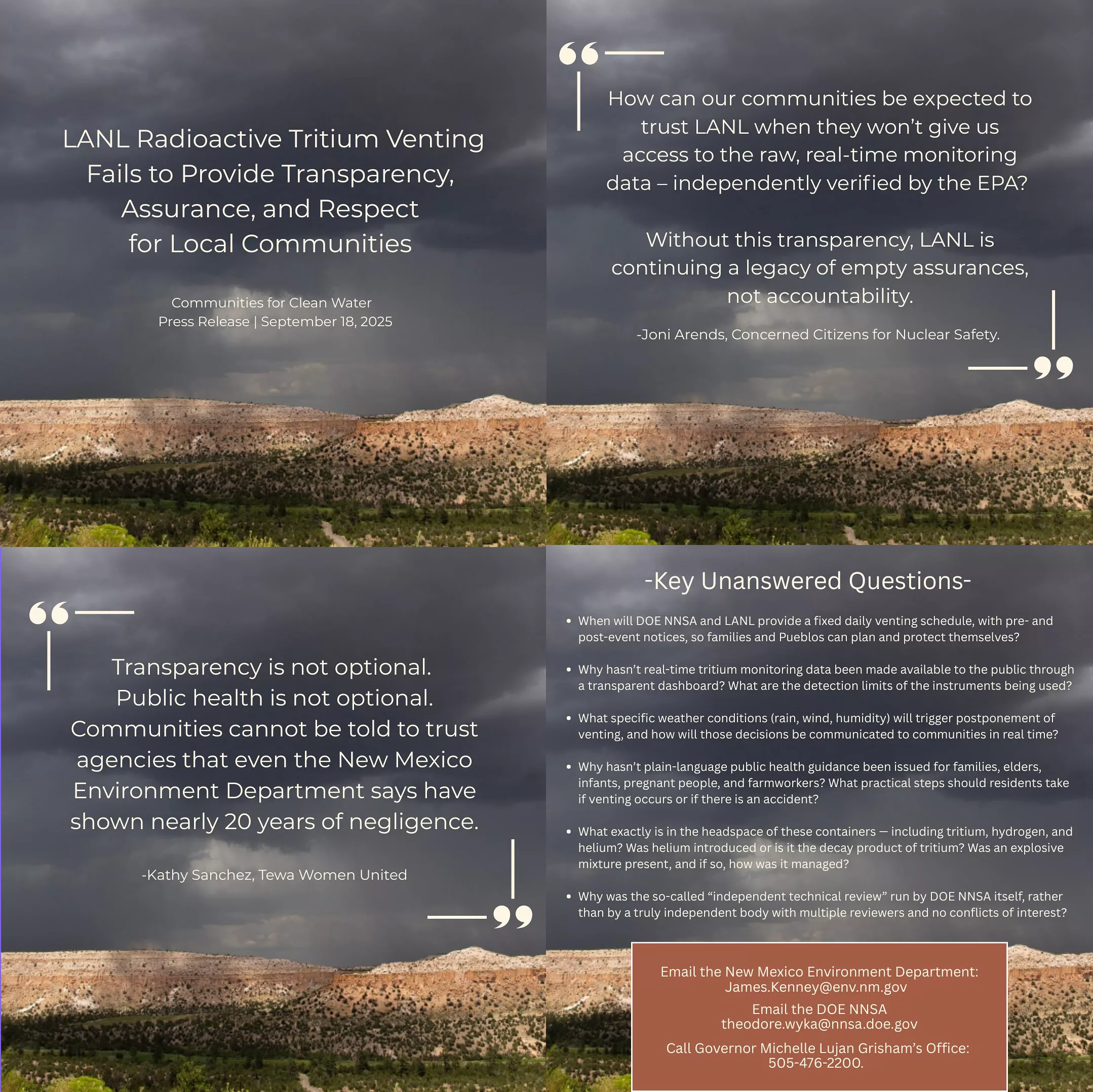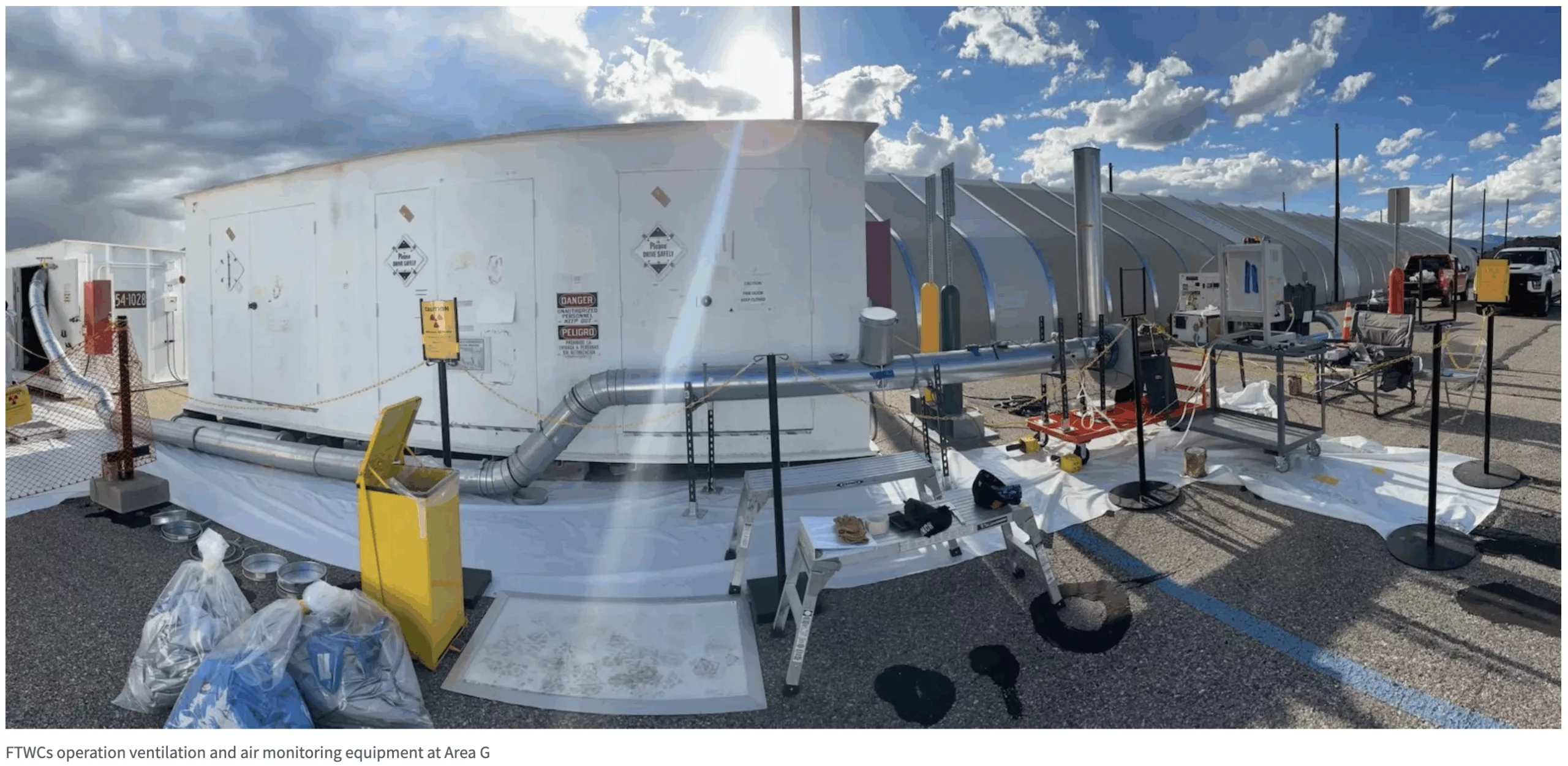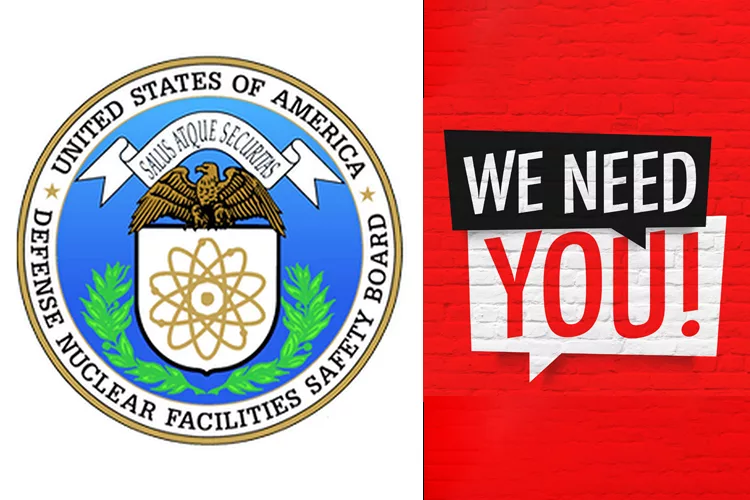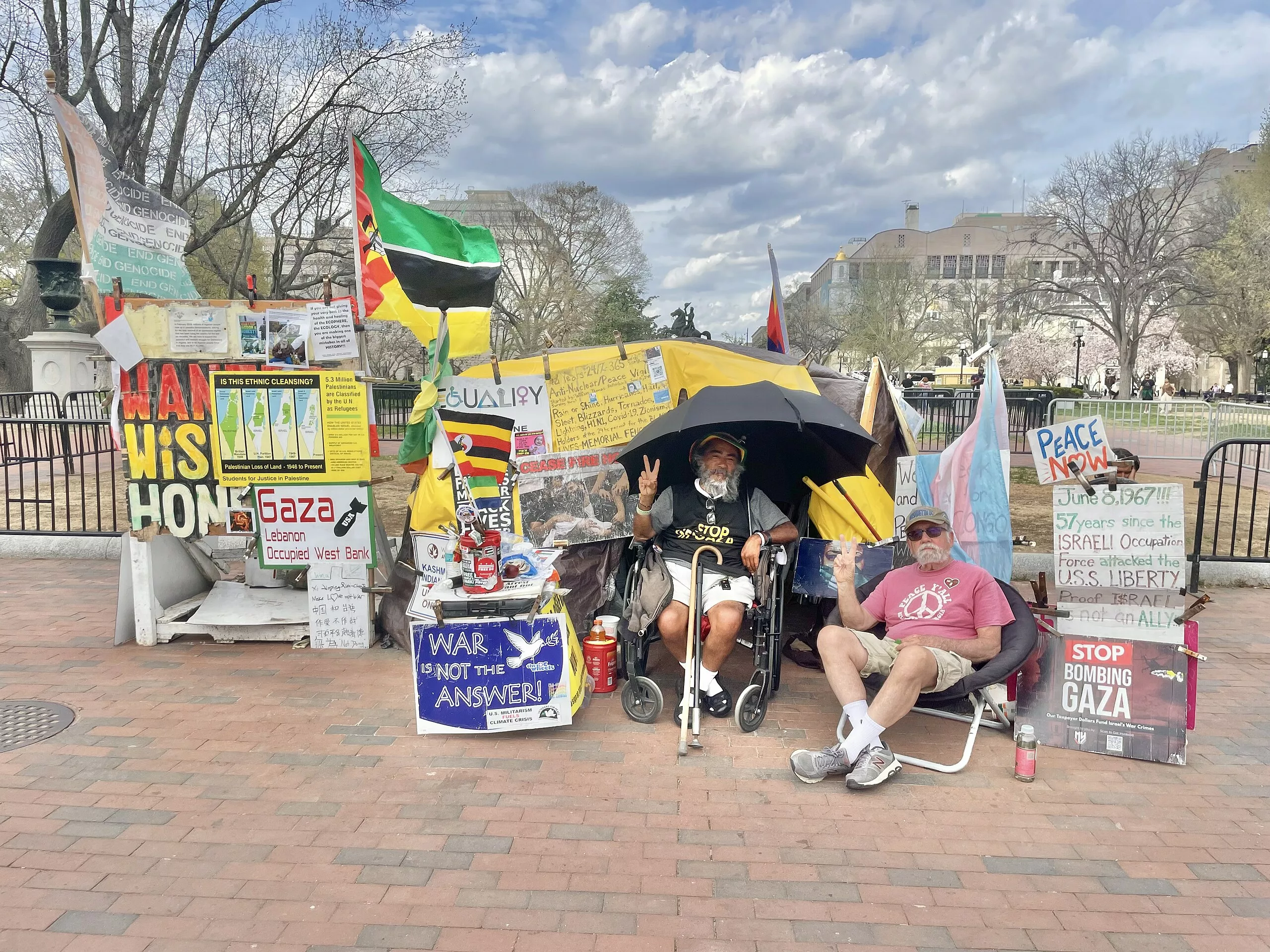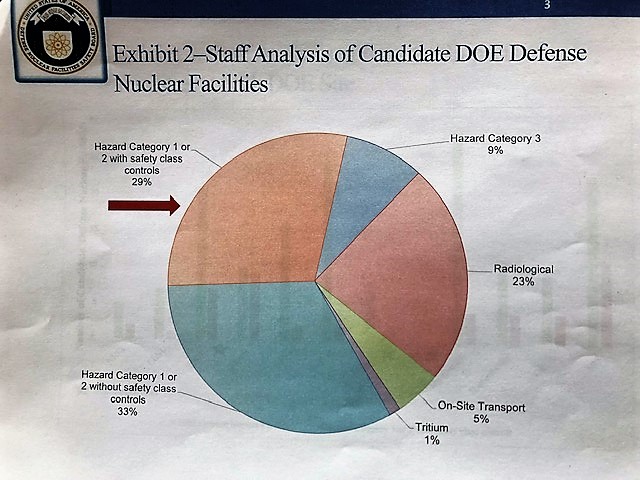Trump talk on nuke testing turns focus to New Mexico’s role in decades of blasts
Jay Coghlan, executive director of the nuclear watchdog group Nuclear Watch New Mexico, said Wright’s comments “somewhat” quelled his initial concerns about a renewed explosive nuclear testing program.
But he said claims Russia and China may be conducting small-scale tests known as hydronuclear tests — banned by the Comprehensive Nuclear Test Ban Treaty, of which the United States, Russia and China are all signatories — continue to give him pause. He fears rumors about the low-yield tests in other nations could be used to justify a domestic return to testing.
“That, in effect, would give permission to the U.S. [to resume testing],” Coghlan said. “But that would be in violation of the norm of the CTBT.”
Three decades removed from the United States’ last nuclear test, a testing regimen would likely be expensive and time-consuming to start up, Coghlan argued, and could prompt other nuclear powers to follow suit.
It seems likely Russia, at least, would: Following Trump’s post, Russian President Vladimir Putin announced if the United States resumed explosive nuclear testing, the Eastern European nation would follow.
“Then everybody else is going to do it, or virtually everybody else will do it, every other nuclear weapons power,” Coghlan said. “I could just see India and Pakistan champing at the bit to test. And then, of course, there’s North Korea and China.”
By Alaina Mencinger amencinger@sfnewmexican.com | November 30, 2025 santafenewmexican.com
It might not have as reverent a name as the Trinity Test or a litany of films made about it. But Project Gnome, a 1961 explosive nuclear test conducted near Carlsbad, is a relic of a bygone era in New Mexico and beyond.
In the 47 years between the Trinity Test and the end of the United States’ explosive nuclear testing in 1992, the nation would perform more than 1,000 such tests — more than any other nuclear nation — with most conducted in Nevada.
New Mexico might not have been the center of the nation’s testing efforts post-Trinity, which marked its 80th anniversary this year, but the state still played a role: Researchers from Sandia National Laboratories and Los Alamos National Laboratory helped design and conduct testing elsewhere, including at the Nevada Test Site and in the Marshall Islands.
Most Democrats and one-third of Republicans think it’s likely the U.S. will get into a nuclear war in the next decade
A new YouGov poll on nuclear weapons finds that nearly half of Americans believe it’s likely the U.S. will get into a nuclear war in the coming decade, and most are worried about personally experiencing a nuclear war. A majority believe nuclear weapons are making the world less safe, but opinions are mixed on whether the U.S. should dismantle all of its nuclear weapons.
By: Jamie Ballard| November 26, 2025 today.yougov.com
46% of Americans think it’s likely the U.S. will get into a nuclear war within the next 10 years; 37% think this is not very or not at all likely. 57% of Democrats and 37% of Republicans think this is likely.
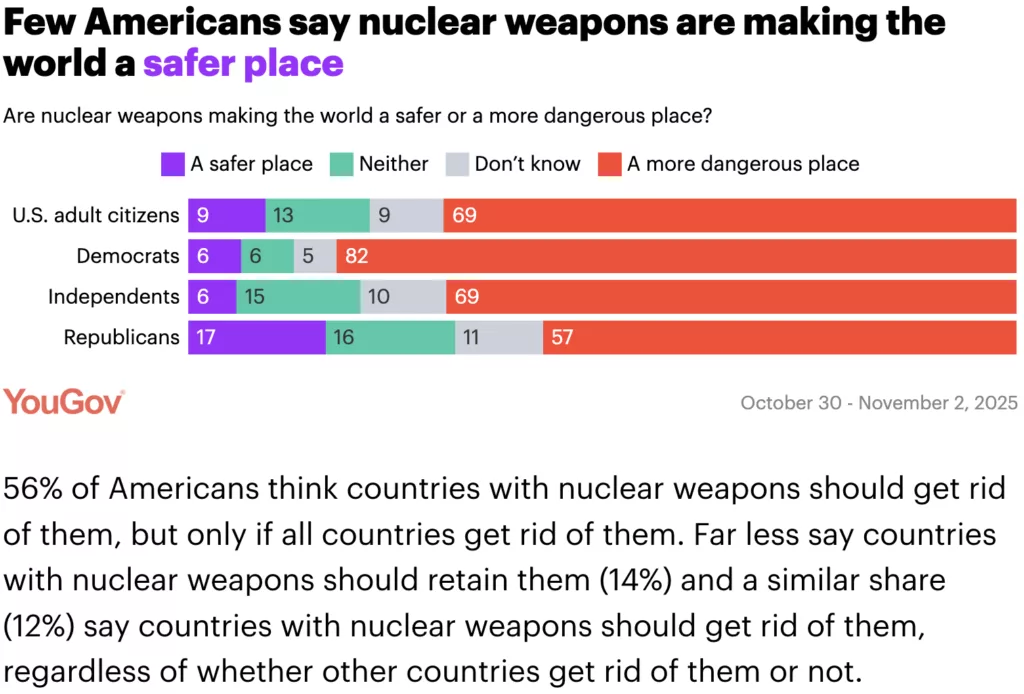
Department of Energy Seeks to Eliminate Radiation Protections Requiring Controls “As Low As Reasonably Achievable”
An internal Department of Energy (DOE) memorandum eliminates worker and public radiation protection rules known “As Low As Reasonably Achievable” (ALARA). This fundamental departure from decades of accepted health physics practices is being promoted by senior DOE political appointees with little background in health or radiation control. It is marked as “URGENCY: High” under the auspices of the DOE Deputy Secretary, the Under Secretary for Science, and the Administrator of the National Nuclear Security Administration. The memorandum awaits the final signature of DOE Secretary Chris Wright.
The memo’s stated goal is to:
“…remove the ALARA principle from all DOE directives and regulations, including DOE Order 458.1, Radiation Protection of the Public and the Environment, NE [Office of Nuclear Energy] Order 458.1, Radiation Protection of the Public, and, upon completion of the rulemaking process, 10 CFR [Code of Federal Regulations] 835, Occupational Radiation Protection.” [1]
It follows the playbook of the Heritage Foundation’s Project 2025, which called for:
“Set[ting] clear radiation exposure and protection standards by eliminating ALARA (“as low as reasonably achievable”) as a regulatory principle and setting clear standards according to radiological risk and dose rather than arbitrary objectives.” [2]
Lab Chromium Contamination Confirmed on San Ildefonso Pueblo Land
Comprehensive Cleanup Needed Instead of More Nuclear Weapons
The New Mexico Environment Department has announced:
“A toxic chromium plume from Los Alamos National Laboratory has spread beyond Lab boundaries onto Pueblo de San Ildefonso land for the first time, with contamination exceeding state groundwater standards… These new results are conclusive evidence that the U.S. Department of Energy’s efforts to contain the chromium plume have been inadequate.”
In reality, chromium groundwater contamination probably migrated beyond the LANL/San Ildefonso Pueblo boundary long ago, with past Lab maps of the plume “magically’ stopping at the border. In the past, tribal leadership has commented that it was fortunate that the contamination stopped there, but that any future indications of groundwater contamination on Pueblo land could have serious consequences. The San Ildefonso Pueblo is a sovereign Native American tribal government.
As late as the late 1990s the Lab was falsely claiming that groundwater contamination was impossible because underlying volcanic tuff is “impermeable.” [1] This ignored the obvious fact that the Parajito Plateau is heavily seismically fractured, providing ready pathways for contaminant migration to deep groundwater. By 2005 even LANL acknowledged that continuing increasing contamination of the regional aquifer is inevitable.[2] Some 300,000 northern New Mexicans rely upon the aquifer for safe drinking water. The potential serious human health effects (including cancer) caused by chromium contamination was the subject of the popular movie Erin Brockovich.
LANL chromium plume spreads onto San Ildefonso Pueblo land, NMED says
Nuclear Watch New Mexico executive direcor Jay Coghlan sees PF-4 as being a bigger scale — and having bigger risks — than the other aging buildings.
“PF-4 is not unique in being old,” Coghlan said. “However, PF-4 is totally unique in currently being the only facility that can process large amounts of plutonium … particularly including plutonium pit production. I think, in part, that’s why the Safety Board focuses more on PF-4 than, to my knowledge, than any other single individual facility.”
By:Patrick Lohmann | November 13, 2025 sourcenm.com
An underground plume of toxic chromium has spread from Los Alamos National Laboratory to Pueblo de San Ildefonso land, state Environment Department officials announced Thursday.
The discovery marks the first time the plume has been detected within the pueblo boundaries, officials said in a news release, though they added the plume’s spread does not pose imminent threats to drinking water in the pueblo or in Los Alamos County. That’s because the plume is not near any known private or public wells, officials said.
Long-term ingestion of hexavalant chromium can cause serious health problems or increase risk of certain cancers.
US Stands Alone Defying UN Vote on Nuclear Test Ban Treaty
Could the LDS Church end an ongoing nuclear weapons project? These veteran activists think so.
By Thalif Deen, Inter Press Sevice | November 12, 2025 ipsnews.net
UNITED NATIONS, Nov 12 2025 (IPS) – The US took another step backward –to break ranks with the United Nations– when it voted against a draft resolution calling for the entry into force of the Comprehensive Nuclear-Test-Ban Treaty (CTBT).
The negative vote followed an announcement by President Trump last month that the US plans to resume nuclear testing after a 33-year hiatus. The US stood alone on the UN vote, which was supported by almost all member States in the General Assembly’s First Committee.
The resolution was adopted by an overwhelming majority: with 168 votes in favor, with one against (United States) and 3 abstentions (India, Mauritius, Syria).
During Trump’s first term, the US abstained on the vote. And in other years they had been voting in favour.
Jackie Cabasso, Executive Director, Western States Legal Foundation, which monitors and analyzes U.S. nuclear weapons programs and policies, told IPS the chaos and uncertainty arose from Trump’s factually-challenged social media post that “because of other countries testing programs, I have instructed the Department of War to start testing our Nuclear Weapons on an equal basis.”
The U.S. government’s first ever “No” vote, on the annual UN resolution in support of the Comprehensive Test Ban Treaty (CTBT), raises further troubling questions about U.S. intentions.
Harking to the MX, Utahns call on LDS Church President Oaks to speak out against nuclear missile being developed in Utah
Could the LDS Church end an ongoing nuclear weapons project? These veteran activists think so.
THE SALT LAKE TRIBUNE | November 9, 2025 sltrib.com
Decades ago, peace activists helped keep a major nuclear weapons system out of Utah with help from key figures, chiefly Spencer W. Kimball, then the president of The Church of Jesus Christ of Latter-day Saints.
Now some of those same individuals are calling on the church’s newly ascended president, Dallin H. Oaks, to follow in his predecessor’s footsteps and speak out against the federal government’s development of a new generation of nuclear missile, known as Sentinel, partly in the Beehive State.
“The arms race continues,” the group of 12 Utahns and one former resident write in a letter mailed to church headquarters in early October, “and a new moral challenge faces” the leaders of the Utah-based faith.
Nuclear Weapons Issues & The Accelerating Arms Race: November 2025
Nuclear weapons:
The government shutdown has impact:
National Nuclear Security Agency confirms 152 furloughed at offices in Albuquerque, Los Alamos
Only 14 employees remain at the two sites By: Danielle Prokop-October 22, 2025
The NNSA confirmed 152 New Mexico employees charged with overseeing national laboratories’ nuclear weapons work were furloughed on Oct. 20, 2025. (Courtesy of NNSA)
The federal government this week sent home more than 150 federal New Mexico employees charged with overseeing national laboratories’ nuclear weapons work, with only 14 employees across two sites remaining at work, the National Nuclear Security Agency confirmed to Source NM.
The furloughs include 71 employees at NNSA’s Los Alamos field office and 81 at the Sandia National Laboratories location, NNSA Deputy Director of Communications Laynee Buckels told Source NM in an email. Seven employees remain at each site, working without pay, she said.
The field offices are responsible for “ensuring compliance with federal contracts to manage and operate the national security assets,” according to the NNSA website
To date there doesn’t appear to be furloughs at LANL, whose employees technically work for a contractor rather than the federal government. Congress is not furloughed, but Speaker Mike Johnson has kept the House out of session. As a result, legislation has come to a screeching halt.
Los Alamos’ plutonium facility safety systems need improvement, oversight board says
Nuclear Watch New Mexico executive direcor Jay Coghlan sees PF-4 as being a bigger scale — and having bigger risks — than the other aging buildings.
“PF-4 is not unique in being old,” Coghlan said. “However, PF-4 is totally unique in currently being the only facility that can process large amounts of plutonium … particularly including plutonium pit production. I think, in part, that’s why the Safety Board focuses more on PF-4 than, to my knowledge, than any other single individual facility.”
By Alaina Mencinger amencinger@sfnewmexican.com | November 7, 2025 santafenewmexican.com
An independent oversight agency wants to see improved safety systems at the facility at the heart of Los Alamos National Laboratory’s plutonium pit mission: PF-4.
The Defense Nuclear Facilities Safety Board reported what it believes to be gaps in a safety analysis drafted for PF-4 and delays in upgrades to safety systems in a letter last month to Energy Secretary Chris Wright.
“Maintaining momentum for these safety infrastructure projects is more important in light of the issues with the safety analysis,” the board wrote in the letter dated Oct. 10. It was signed by former acting chairman Thomas Summers.
LANL Prioritizes Plutonium “Pit” Bomb Core Production Over Safety
The independent Defense Nuclear Facilities Safety Board recently released its Review of the Los Alamos Plutonium Facility Documented Safety Analysis. It concluded that:
“While LANL facility personnel continue to make important upgrades to the Plutonium Facility’s safety systems, many of those projects have encountered delays due to inconsistent funding and other reasons. DOE and LANL should consider prioritizing safety-related infrastructure projects to ensure that the Plutonium Facility safety strategy adequately protects the public, as the facility takes on new and expansive national security missions.” (Page 24)
In early October 2024, the Department of Energy’s semi-autonomous National Nuclear Security Administration (NNSA) announced with great fanfare that the Los Alamos Lab had produced its first “diamond stamped” plutonium pit for the nuclear weapons stockpile. Tens of billions of taxpayers’ dollars have been sunk into LANL’s long delayed and over budget pit production program. Given no further announcements, it is not currently known whether or not the Lab is meeting its congressionally required production goals. Endemic nuclear safety problems have long been an intractable issue, at one point even forcing a three-year halt to plutonium operations at LANL’s Plutonium Facility-4 (“PF-4”).
In its recent Review, the Safety Board reported:
“The [2009] Plutonium Facility safety basis described very large potential [radioactive] dose consequences to the public following seismic events…. DOE committed to upgrade and seismically qualify the ventilation system, with a particular focus on a specific ventilation subsystem…”
“As the only facility in the DOE complex that can process large quantities of plutonium in many forms, [PF-4] represents a unique capability for the nation’s nuclear deterrent. The Board has long advocated for the use of safety-related active confinement systems in nuclear facilities for the purposes of confining radioactive materials…Passive confinement systems are not necessarily capable of containing hazardous materials with confidence because they allow a quantity of unfiltered air contaminated with radioactive material to be released from an operating nuclear facility following certain accident scenarios. Safety related active confinement ventilation systems will continue to function during an accident, thereby ensuring that radioactive material is captured by filters before it can be released into the environment… (Page 2, bolded emphases added)
AP: Trump appears to suggest the US will resume testing nuclear weapons for first time in 30 years
“For Trump, who has cast Russia as a “paper tiger” for failing to swiftly subdue Ukraine, the message is that Russia remains a global military competitor, especially on nuclear weapons, and that Moscow’s overtures on nuclear arms control should be acted on.”
By MICHELLE L. PRICE and CHRIS MEGERIAN | October 30, 2025 apnews.com
BUSAN, South Korea (AP) — President Donald Trump appeared to suggest the U.S. will resume testing nuclear weapons for the first time in three decades, saying it would be on an “equal basis” with Russia and China.
The Kremlin pointed out that a global ban on nuclear tests has remained in place, but warned that if any country resumes nuclear testing Russia would follow suit.
There was no indication the U.S. would start detonating warheads, but Trump offered few details about what seemed to be a significant shift in U.S. policy.
He made the announcement on social media minutes before he met with Chinese leader Xi Jinping on Thursday in South Korea. He offered little clarity when he spoke to reporters later aboard Air Force One as he flew back to Washington.
The U.S. military already regularly tests its missiles that are capable of delivering a nuclear warhead, but it has not detonated the weapons since 1992. The Comprehensive Nuclear Test Ban Treaty, which the U.S. signed but did not ratify, has been observed since its adoption by all countries possessing nuclear weapons, North Korea being the only exception.
REUTERS: Trump tells Pentagon to immediately resume testing US nuclear weapons
“Russia – which tested a new nuclear-powered cruise missile on October 21, held nuclear readiness drills on October 22 and tested a new nuclear-powered autonomous torpedo on October 28 – said it hoped Trump had been properly informed that Moscow had not tested a nuclear weapon itself.”
By Trevor Hunnicutt, Ismail Shakil and Kanishka Singh | October 30, 2025 reuters.com
VIEW THE RECORDING: Santa Fe Ecumenical Conversations Towards Nuclear Disarmament at Santa Maria de la Paz Catholic Community – Monday, October 27
Archbishop John C. Wester and NukeWatch New Mexico presented a special evening at Santa Maria de la Paz Catholic Community on Monday, October 27, from 6:00 to 8:00 p.m. MT. Following a presentation from NukeWatch executive director Jay Coghlan on U.S. nuclear weapons “modernization,” the Archbishop shared reflections from his pastoral letter, Living in the Light of Christ’s Peace, and speak about the importance of dialogue and hope in working toward nuclear disarmament.
View the recording at https://www.youtube.com/watch?v=9LFmQzMoJds&t=1s
Trump Orders Nuclear Weapons Testing for New Nuclear Arms Race
New Plutonium “Pit” Bomb Cores at Los Alamos Lab Could Make It Real
Just minutes before meeting with Chinese President Xi Jinping, Trump posted on his Truth Social media platform that “Because of other countries testing programs, I have instructed the Department of War to start testing our Nuclear Weapons on an equal basis. That process will begin immediately.” House Speaker Mike Johnson soon followed on CNN saying, “I think it is an obvious and logical thing to ensure that our weapons systems work.”
No other countries are currently testing nuclear weapons (the last was by North Korea in 2017). Further, any nuclear weapons tests by the U.S. would be performed by the Department of Energy (whose last test was in 1992), not the Department of War (until recently the Department of Defense). Trump was likely referring to Vladimir Putin’s recent claims of a new nuclear powered cruise missile and a tsunami-causing nuclear-armed torpedo that could threaten America’s coastal cities. In addition, China is dramatically expanding its own fleet of intercontinental ballistic missiles.
But central to all this is the U.S.’ own $2 trillion “modernization” program that will rebuild every nuclear warhead in the planned stockpile with new military capabilities and produce new-design nuclear weapons as well. This so-called modernization program will also build new nuclear weapons production facilities expected to be operational until ~2080, and buy new missiles, subs, and bombers from the usual rich defense contractors, all to keep nuclear weapons forever.
‘Nuclear weapons are blasphemous’: Archbishop Wester continues disarmament push with talk
This event was organized by the “Santa Fe Ecumenical Conversations Towards Nuclear Disarmament” group at the Santa Maria de la Paz parish near the Santa Fe Community College. They kindly invited NukeWatch to speak before Archbishop Wester for what turned out to be a wonderful event. The full recording can be viewed at https://www.youtube.com/@SMDLP/streams
By Cormac Dodd cdodd@sfnewmexican.com | October 28, 2025 santafenewmexican.com
Despite saying he has received a somewhat muted response from the local faithful, Santa Fe’s Catholic archbishop is still pushing nuclear disarmament as vital to humanity’s spiritual well-being and continued existence.
“I think nuclear weapons are blasphemous, because I think nuclear weapons are humanity’s attempt to build a Tower of Babel, an attempt to eat from the apple of the tree of the Garden of Eden, to become like God, to become gods,” Archbishop John C. Wester said in a roughly 30-minute address at Santa Maria de la Paz Catholic Church south of Santa Fe.
“In humility, we must avoid inventing anything that, in a matter of hours, can destroy what God has created,” the leader of the Archdiocese of Santa Fe continued. “The story of Adam and Eve is archetypal, I think: When human beings try to become as God, they lose the Garden of Eden and they must endure the cruel reality of paradise lost.”
The archbishop’s comments followed a journey he undertook to Japan on the 80th anniversary of the U.S. military’s decision to drop atomic bombs on Hiroshima and Nagasaki toward the end of World War II. He spoke in front of an audience of about 50 people — who gave Wester a standing ovation — at Monday’s event
In a Looming Nuclear Arms Race, Aging Los Alamos Faces a Major Test
The lab where Oppenheimer developed the atomic bomb is the linchpin in the United States’ effort to modernize its nuclear weapons. Yet the site has contended with contamination incidents, work disruptions and old infrastructure.
By Alicia Inez Guzmán | October 28, 2025 The New York Times nytimes.com
In a sprawling building atop a mesa in New Mexico, workers labor around the clock to fulfill a vital mission: producing America’s nuclear bomb cores.
The effort is uniquely challenging. Technicians at Los Alamos National Laboratory must handle hazardous plutonium to create the grapefruit-size cores, known as pits. They do so in a nearly 50-year-old building under renovation to address aging infrastructure and equipment breakdowns that have at times disrupted operations or spread radioactive contamination, The New York Times found.
Now, the laboratory is under increasing pressure to meet the federal government’s ambitions to upgrade the nation’s nuclear arsenal. The $1.7 trillion project includes everything from revitalizing missile silos burrowed deep in five states, to producing new warheads that contain the pits, to arming new land-based missiles, bomber jets and submarines.
But the overall modernization effort is years behind schedule, with costs ballooning by the billions, according to the Congressional Budget Office. In 2018, Congress charged Los Alamos with making an annual quota of 30 pits by 2026, but by last year it had produced just one approved for the nuclear stockpile. (Officials have not disclosed whether more have been made since then.)
*The featured image differs from the article photo due to usage rights.
Why Putin’s ‘invincible’ nuclear-powered missile is more likely to become a disastrous ‘flying Chernobyl’ for Russia
The US abandoned efforts to build nuclear-powered missile weapons during the 1950s arms race with the Soviet Union as a nuclear-powered missile would effectively be a huge radiation risk.
Jeffrey Lewis, a nuclear nonproliferation expert at Middlebury College, described it as a “tiny flying Chernobyl,” referencing the Soviet power plant that melted down and covered a 1,600-mile area with toxic radiation…While Lewis believes the Burevestnik is only capable of subsonic speed and easy to intercept, he warned that Russia’s ambition poses a return to the Cold War era.
“NATO aircraft could intercept it. The problem is that Burevestnik is yet another step in an arms race that offers no victory for either side,” he wrote on X.
By Ronny Reyes | October 28, 2025 nypost.com
Russian strongman Vladimir Putin’s latest threats that Moscow is preparing to deploy its new “invincible” nuclear-powered cruise missile has drawn a rebuke from President Trump and a reminder of America’s own nuclear might.
But experts say the Burevestnik missile could end up being more like a disastrous “flying Chernobyl” for Russia — and proves Putin is actually nervous about the possibility of the US giving Tomahawk cruise missiles to Ukraine.
George Barros, of the Washington-based Institute for the Study of War, described Putin’s ominous Sunday announcement as a form of fear mongering from a Kremlin afraid that the US could give Kyiv a much more conventional weapon — the tried and true Tomahawk.
Russia tested new nuclear-powered Burevestnik cruise missile
“For Trump, who has cast Russia as a “paper tiger” for failing to swiftly subdue Ukraine, the message is that Russia remains a global military competitor, especially on nuclear weapons, and that Moscow’s overtures on nuclear arms control should be acted on.”
By Guy Faulconbridge and Lidia Kelly Tim Balk | October 26, 2025 reuters.com
- Russia tests nuclear-capable Burevestnik missile
- Missile flew for 14,000 km, 15 hours
- Putin says it can pierce any missile defences
Trump Administration Providing Weapons Grade Plutonium to Sam Altman
“If there were adults in the room and I could trust the federal government to impose the right standards, it wouldn’t be such a great concern, but it just doesn’t seem feasible.”
By: Joe Wilkins | October 24, 2025 futurism.com
With the economy the way it is these days, it’s nice to have a little walking around money.
Donald Trump certainly thinks so. Since his return to the White House, the president has labeled 440 federal properties for possible sale, leased 13.1 million acres of public land for strip mining, and held a fire sale for satellites developed by NASA’s Jet Propulsion Lab.
In one of his wildest money moves to date, the Financial Times reports that Trump is now offering companies access to plutonium from America’s arsenal of cold war nuclear missiles.
On Tuesday, the US Department of Energy (DOE) launched an application for interested parties to apply for access to a maximum of 19 metric tonnes — a little under 42,000 pounds — of weapons-grade plutonium, which has long been a key resource undergirding the US nuclear arsenal.
One of the companies anticipated to receive shipments of the fissile isotope from the DOE is Oklo, a “nuclear startup” backed — and formerly chaired — by OpenAI CEO Sam Altman. Earlier in October, Oklo was one of four US companies chosen by the DOE to join a new pilot program meant to rush the testing and approval of experimental reactor designs.
As the FT reports, we won’t know for certain until December 31, when the DOE announces the companies selected to purchase the plutonium, but it’s likely Oklo will be among them. That’s stirring up plenty of anxiety throughout the scientific community, who say the relaxed approach to nuclear development is a major cause for alarm.
“If there were adults in the room and I could trust the federal government to impose the right standards, it wouldn’t be such a great concern, but it just doesn’t seem feasible,” Edwin Lyman, a physicist with the Union of Concerned Scientists told the FT.
U.S. Agency That Protects Nuclear Arsenal to Furlough Workers
Jay Coghlan, the executive director of Nuclear Watch New Mexico, a private group that monitors the agency, said it was unclear if the furloughs would have any immediate effect on nuclear safety. “As a baseline, the nuclear safety officers have always been understaffed. There is simply not enough federal oversight as is. And then you’re talking about furloughing more,” he added.
By Tim Balk | October 17, 2025 nytimes.com
![]() The National Nuclear Security Administration said 1,400 workers would be affected by Monday.
The National Nuclear Security Administration said 1,400 workers would be affected by Monday.
Nuclear weapons safety oversight in decline with Trump, Biden inaction
The lone independent federal agency responsible for ensuring safety at U.S. nuclear weapons sites — including Hanford in Washington state — will lose its ability to issue recommendations for safer work by January if the Trump administration doesn’t replenish its board, which this month dwindles to one member.
By Patrick Malone | October 15, 2025 seattletimes.com
The Defense Nuclear Facilities Safety Board ensures adequate public health and worker safety by scrutinizing hazardous work conducted by the U.S. Department of Energy and its contractors that produce and maintain the nuclear arsenal. If the Trump administration and Congress don’t move quickly to populate the board, it will be incapable of issuing formal safety recommendations to the Energy Department, according to a report last month from the Government Accountability Office, Congress’ investigative arm.
If the board is without a quorum of at least three members for a year, “the agency would essentially be able to offer only nonbinding advice to DOE,” according to the report.
“The whole idea of having the board in place is to provide the optics in addition to the substance,” Nathan Anderson, a Washington state-based director in the GAO’s natural resources division, told The Seattle Times.
The board does not have regulatory or enforcement authorities, but its advice carries significant weight and cannot be easily dismissed or disregarded, the GAO report states. The board’s recommendations to the U.S. secretary of energy are published for public comment, and the secretary must respond in writing. The board also reports each year to selected congressional committees on its recommendations to the Energy Department and any outstanding safety problems.
FULL ORIGINAL ARTICLE (SEATTLE TIMES)
YOU CAN HELP SAVE THE DNFSB TODAY:
Continue reading
New Article about “Participatory Democracy in Action” Describes WIPP Permit Negotiations
Thanks to our friends at Concerned Citizens for Nuclear Safety for this article:
In an essay for NYU’s Democracy Project, David F. Levi, a former federal judge and director emeritus of the Bolch Judicial Institute at Duke Law, reflected on the negotiations he facilitated in New Mexico about the renewal of the hazardous waste permit for the Waste Isolation Pilot Plant (WIPP), a deep geologic repository for plutonium-contaminated waste generated in the fabrication of nuclear weapons. Judge Levi’s essay is entitled “Participatory Democracy in Action.” He wrote:
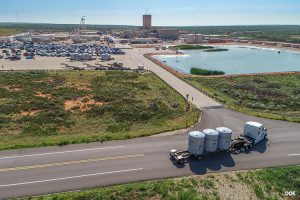 “A couple of years ago, I was asked to mediate a dispute between the U.S. Department of Energy (DOE) and the New Mexico Environment Department (NMED) concerning the renewal of a required state permit for DOE’s Waste Isolation Pilot Plant (WIPP), the nation’s only deep underground nuclear waste storage facility, located outside of Carlsbad, New Mexico. I thought I could help the two government entities but quickly came to realize that under the mediation procedures followed by New Mexico, the mediation would also involve citizen groups whose ultimate concurrence was essential to any complete resolution. This was entirely new to me.
“A couple of years ago, I was asked to mediate a dispute between the U.S. Department of Energy (DOE) and the New Mexico Environment Department (NMED) concerning the renewal of a required state permit for DOE’s Waste Isolation Pilot Plant (WIPP), the nation’s only deep underground nuclear waste storage facility, located outside of Carlsbad, New Mexico. I thought I could help the two government entities but quickly came to realize that under the mediation procedures followed by New Mexico, the mediation would also involve citizen groups whose ultimate concurrence was essential to any complete resolution. This was entirely new to me.
“In this case, there were seven such citizen groups entitled to participate and representing a variety of points of view. There was one group representing some of the government and business leaders of the town of Carlsbad who favored permit renewal on terms ensuring the continued long-term operation of WIPP. There were six groups expressing a variety of concerns about nuclear waste coming to New Mexico. They sought a more restrictive permit.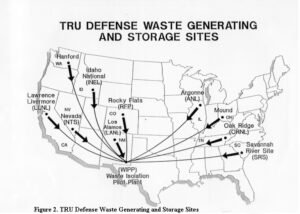
“To my astonishment, over the course of four full days, we worked through the multitude of issues and came to complete agreement. Something magical had happened. Thanks to the goodwill of the DOE and its contractor, the remarkable daily attendance and attentiveness of the NMED Secretary and the measured and well-informed way in which the various citizen groups made their points, we were able to find consensus and craft permit language that was acceptable to everyone.
“For me, as a former judge and mediator, the experience was thrilling. It was an experience of participatory democracy in action that made me proud of our fellow citizens and our government. Three aspects of the experience stand out. First, everyone in the room had taken responsibility for the way in which our nation’s only deep underground nuclear storage facility would be operated for the next 10 years. The citizen participants were not just making suggestions; they were assuming many of the attributes of decision makers. Second, all participants were advocating, compromising, and collaborating on behalf of what they saw as the public interest. These are the essential skills of democracy—the civic virtues so central to the Founders’ vision of what would make democracy work in America—and they require practice. Finally, over four days around a table, the citizens were able to take the measure of the DOE and NMED representatives. They came to realize, as I did, that these public servants, as well as the DOE contractor, were very well-informed, experienced, and intentioned. The government representatives had a similar experience of coming to appreciate the citizen questions and points of view. A government that relies on trust needs this kind of interaction to maintain that trust.
“It seems our democracy would be strengthened if we could extend the benefits of this kind of participatory structure to other areas of our legal and regulatory systems.”
“In Democracy in America, Alexis de Tocqueville made some of these points in reference to the jury trial in civil cases. He emphasized the importance of the civil jury trial as a free “public school” [https://contextus.org/Tocqueville,_Democracy_in_America_(1835),_Book_I,_Chapter_XVI_Causes_Mitigating_Tyranny_In_The_United_States_(Part_II).13?ven=Gutenberg&lang=en]  educating jurors in the democratic virtues and skills and teaching them to assume responsibility. In the same vein, every trial judge I know would attest to the importance of the jury experience for building confidence in the courts. After a trial, judges often hear words of gratitude from jurors who are deeply impressed by the legal process and are honored to have participated despite their initial dismay at being called to jury service. Sadly, the number of jury trials has diminished, particularly in federal court. Reversing that trend is a worthy goal, particularly for a branch of government that depends so heavily on public confidence.
educating jurors in the democratic virtues and skills and teaching them to assume responsibility. In the same vein, every trial judge I know would attest to the importance of the jury experience for building confidence in the courts. After a trial, judges often hear words of gratitude from jurors who are deeply impressed by the legal process and are honored to have participated despite their initial dismay at being called to jury service. Sadly, the number of jury trials has diminished, particularly in federal court. Reversing that trend is a worthy goal, particularly for a branch of government that depends so heavily on public confidence.
“As a final reflection: any persons involved as litigants will have an experience of the legal system. The experience can advance their sense of agency and participation, their ability to disagree civilly, and their trust in the courts. But how can these objectives be obtained when so many Americans cannot afford a lawyer? We can do so much better to provide understanding of and access to our justice system.”
The six New Mexico based non-governmental organizations were Citizens for Alternatives to Radioactive Dumping (CARD), Concerned Citizens for Nuclear Safety (CCNS), Conservation Voters New Mexico (CVNM), Nuclear Watch New Mexico, Southwest Alliance for a Safe Future (SAFE), and Southwest Research and Information Center (SRIC). The individual was Steve Zappe, a grandfather and former NMED WIPP Program Manager.
“A House of Dynamite” New Netflix Nuclear Catastrophe Film: Fiction, for Now
The reviews are rolling in for “A House of Dynamite,” which premiered in Europe earlier this month before coming to the U.S. on October 10th, with a full Netflix release scheduled for the 24th. Here’s the trailer, and see the schedule for Santa Fe theater showings here:
This Week! Santa Fe Theater Screenings for the Film “A House of Dynamite”
I attended one of these screenings last night, and I’ll let the professional critic reviews give the gist:
The Kathryn Bigelow thriller looks at what might happen if a ballistic missile were headed to the U.S. The director hopes the movie will start a conversation. New York Times: At Venice, ‘A House of Dynamite’ Is Scarier Than Most Horror Films
“The Netflix thriller captures from multiple perspectives the White House response to an unattributed missile launch headed for a major U.S. city in the harrowing 20 minutes until projected impact…”An unrelenting chokehold thriller so controlled, kinetic and unsettlingly immersive that you stagger out at the end of it wondering if the world will still be intact.” ‘A House of Dynamite’ Review: Idris Elba and Rebecca Ferguson in Kathryn Bigelow’s Precision-Tooled, Viscerally Unsettling Nail-Biter
“Told from the perspective of soldiers at a remote Alaskan missile base, staffers in the White House situation room, military officials at US Central Command (CENTCOM), and the president of the United States, the film weaves an overlapping timeline to show how the United States would respond to a missile attack…The film doesn’t want viewers to ask themselves how to thwart a nuclear attack on the United States. Rather, it wants the viewer to question the value of having nuclear weapons at all. ‘None of this makes sense,’ the President (Idris Elba) bemoans, ‘Making all these bombs and all these plans.'”
“A House of Dynamite is a terrifying examination of how terribly wrong things can go even with highly competent people in charge…But that’s also not necessarily the world we’re living in…The film shows why the worst can happen, even when competent, well-meaning people are trying to do the right thing.
But what if competence and decency are in short supply?” A House of Dynamite: Bigelow’s latest thriller shows why nuclear bombs are only part of the danger
This film left me reeling with tension and anxiety and exactly as the Times article titles it, is scarier than most horror films. Unlike ‘Oppenheimer,’ which largely glorified the invention of the atomic weapon, ‘A House of Dynamite’ makes it impossible to ignore the threat that nuclear weapons pose to our world. Working backwards from perspectives, and focused on how we can actually improve our odds of keeping this story a fictional one, here is what struck me most about this film:
-
-
Only one person decides what happens. But the real threat isn’t one reckless leader — it’s a reckless system. The final segment of the film features the “nuclear football” heavily, a briefcase containing launch procedures and options. In the United States, the president holds the sole and absolute authority to order the use of nuclear weapons. In the film, there are many voices in the President’s ear, but two primary perspectives quickly emerge after the defense fails and the ICBM remains inbound to its U.S. target: “One side advocates a retaliatory strike; the other, nothing. ‘It’s surrender or suicide,’ one adviser tells the President,” – thebulletin.org. The military aide carrying the nuclear football is tasked with providing the President the list of options if retaliation is chosen. An absolute must-read, Daniel Ellsberg’s book “The Doomsday Machine” breaks down many of the themes in the film with pure and terrifyingly honest account of Cold War-era nuclear strategy. In terms of launch authority, he describes how the inherent instability of the delegated command structure of the nuclear apparatus makes accidental or unwanted war an ever-present danger.
-
LANL tritium containers to head to Texas after last treatment
Four flanged tritium waste containers have been depressurized and transported to Los Alamos National Laboratory’s Weapons Engineering Tritium Facility, where they will be treated further before heading out-of-state for disposal.
By Alaina Mencinger amencinger@sfnewmexican.com | October 15, 2025 santafenewmexican.com
The containers’ final destination is Waste Control Specialists, a West Texas facility that handles the storage and disposal of radioactive waste.
The more than 1,300-acre facility in Andrews County is located on an approximately 14,000 acre property, which is sited on a thick clay formation which the company describes as “nearly impermeable.”
New documents have been added to the Los Alamos Legacy Cleanup Contract Electronic Public Reading Room.
All legacy cleanup documents required to be posted after April 30, 2018, are available on the site linked above.
For legacy cleanup documents that were posted prior to April 30, 2018, please visit the LANL electronic public reading room.
- Review, Notice of Completion of Off-Site Waste Shipments for Final Disposal, Activities 3.1.5, 3.1.8, and 3.3.4, Compliance Plan, Site Treatment Plan, Federal Facility Compliance Order Los Alamos National Laboratory [July 31, Aug. 21, 2025]
https://ext.em-la.doe.gov/GovFTPFiles/api/GetFiles/GetFile?fileName=EMID-703933_NMED_Review_STP_Shpmt_Jul_31_Aug_21_101525.pdf
Strong Political and Public Opposition Means Consolidated Interim Storage Facility (CISF) in NM “Impossible in the Near Future”
NEW UPDATE OCTOBER 10, 2025:
Holtec abandons plan to build New Mexico storage facility for spent nuclear fuel
This is excellent news. The Governor and state legislature (specifically Senator Jeff Steinborn and Representative McQueen) are to be commended for not allowing New Mexico to become the nation’s dumping ground for highly radioactive commercial spent fuel rods, especially when the Land of Enchantment has never had its own nuclear energy plant. Hard work from many New Mexicans made this happen.
So-called “interim” storage would never be interim when the federal government has failed for more than four decades to find a permanent repository for these lethal wastes. This also shows how hollow all the hype is about the claimed renaissance of nuclear power, when on the front end the industry can’t survive without taxpayer handouts, and on the back end can’t solve its radioactive waste problem.
Holtec’s quote that “New Mexico’s acquiescence is necessary” for interim storage to go forward is interesting, implying that we have to surrender as the nuclear colony that we are. Well, guess what, we didn’t surrender, and I predict you’ll see more of this. Moreover, whether you’re pro-nuclear or anti-nuclear, Holtec is an ethically questionable company, which is why the attorneys general of New Jersey and Massachusetts have sued it.
Adiós and good riddance, Holtec!
New York Times: Tax Break Scandal Leads to $5 Million Fine for N.J. Energy Company
SEE MORE:
Nuclear Weapons Issues & The Accelerating Arms Race: September 2025
Nuclear Weapons Update:
Putin has offered Trump a one-year extension of the numerical cap on strategic nuclear weapons in the new Strategic Arms Reduction Treaty which is 1,550 warheads (however, B52s are counted as one warhead while they can carry a dozen). New START expires in February 2026, which will be the first time the world will be without any nuclear arms control treaties since the mid-1970s. Trump has said it sounded like a good idea.
Note: New START ratification in 2010 provided the opportunity for Republicans in the Senate to attach the condition of $88 billion for nuclear weapons “modernization” that has since metastasized to ~$2 trillion. Nuclear disarmament must be prioritized as the ultimate goal over simply continued arms control.
A mere extension of the numerical cap would not involve Congressional ratification. The extension of New START’s numerical cap is in part to allow for a year in which to begin negotiations for a treaty replacement.
Plutonium Pit Production:
A draft plutonium pit production programmatic environmental impact statement is expected to be released next year in early 2026.
Accelerating Arms Race:
Is North Korea set to become world’s ‘fourth ICBM power’ after missile breakthrough? | Park Chan-kyong | South China Morning Post | September 11, 2025
A new era in North Korea’s missile programme may be dawning, as analysts warn of an imminent test launch of an intercontinental ballistic missile capable of carrying multiple warheads to the US mainland. Fresh from his appearance at China’s Victory Day parade in Beijing last week, North Korean leader Kim Jong-un personally oversaw the trial of a lighter, more robust solid-fuel ICBM engine, state media reported on Tuesday, touting the achievement as a “strategic” breakthrough.
Saudi Arabia signs a mutual defense pact with nuclear-armed Pakistan after Israel’s attack on Qatar | MUNIR AHMED & JON GAMBRELL | AP NEWS | September 18, 2025
DUBAI, United Arab Emirates (AP) — Pakistan’s defense minister says his nation’s nuclear program “will be made available” to Saudi Arabia if needed under the countries’ new defense pact, marking the first specific acknowledgment that Islamabad had put the kingdom under its nuclear umbrella.
Defense Minister Khawaja Mohammad Asif’s comments underline the importance of the pact struck this week between Pakistan and Saudi Arabia, which have had military ties for decades.
The move is seen by analysts as a signal to Israel, long believed to be the Middle East’s only nuclear-armed nation. It comes after Israel’s attack targeting Hamas leaders in Qatar last week killed six people and sparked new concerns among Gulf Arab nations about their safety as the Israel-Hamas war devastated the Gaza Strip and set the region on edge.
Russia suspected of helping North Korea build nuclear submarines, Seoul investigating | Park Chan-kyong | South China Morning Post | September 18, 2025
South Korea is investigating reports that Russia has supplied North Korea with nuclear submarine reactor modules, a move analysts see as highly plausible and one that could mark a breakthrough in Pyongyang’s decades-long push for a nuclear-powered navy… At the 8th Party Congress in January 2021, North Korea declared five core defence goals, including the development of nuclear-powered submarines and submarine-launched strategic nuclear weapons.
China Hardens Military Stance Against U.S. With Nuclear Weapons and Tough Talk | Brian Spegele | The Wall Street Journal| September 18, 2025
China played down its rapidly rising military might for years. In the past few weeks, Beijing has broadcast a steady drumbeat of firepower displays and muscular rhetoric, carrying an unmistakable warning for the U.S… Part of China’s confidence stems from the rapid growth of its firepower. The Pentagon estimates that China’s stockpile of nuclear warheads has more than doubled since 2020, alongside a growing array of options to launch those weapons, from mobile ground-launch systems to increasingly stealthy submarines.
Holtec Pulls Out of New Mexico Spent Nuclear Fuel Interim Storage Project
Holtec International has confirmed it is canceling plans to build a consolidated interim storage facility for spent nuclear fuel in southeastern New Mexico.
By Radwaste Solutions | October 9, 2025 ans.org
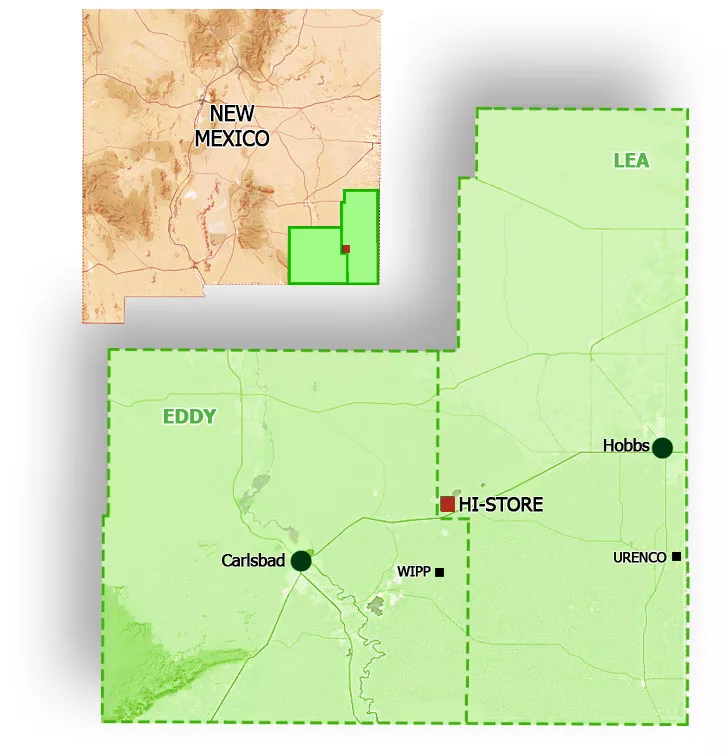
Named the HI-STORE CISF, the facility would have stored up to 10,000 canisters of commercial SNF on land owned by the Eddy-Lea Energy Alliance (ELEA) near the towns of Carlsbad and Hobbs.
“After discussions with our longtime partner in the HI-STORE project, the Eddy-Lea Energy Alliance, and due to the untenable path forward for used fuel storage in New Mexico, we mutually agreed upon canceling the agreement. This allows for ELEA to work to redevelop the property in a manner that fits their needs and allows Holtec to work with other states who are amenable to used fuel storage based on the recent DOE work on public education and outreach,” Holtec said in a statement (emphasis added).
Following the U.S. Supreme Court’s June ruling in NRC v. Texas, which found that petitioners did not have standing to challenge the Nuclear Regulatory Commission’s licensing of Interim Storage Partners’ CISF in Texas, Holtec said it expected to have its HI-STORE CISF license reinstated, allowing the company to move forward with the project. Holtec and ISP’s NRC licenses were vacated by the 5th Circuit Court of Appeals in a 2023 ruling.
Despite the court’s decision, New Mexico Gov. Michelle Lujan Grisham said she remained committed to preventing the HI-STORE CISF from being built. In 2023, New Mexico passed a bill barring the storage and disposal of high-level radioactive waste in New Mexico without the state’s explicit consent.
The AI Doomsday Machine Is Closer to Reality Than You Think
“Most troubling to experts on AI and nuclear weapons is that it’s getting harder and harder to keep decisions about targeting and escalation for nuclear weapons separate from decisions about conventional weapons.”
“There is no standing guidance, as far as we can tell, inside the Pentagon on whether and how AI should or should not be integrated into nuclear command and control and communications,” says Jon Wolfsthal, director of global risk at the Federation of American Scientists.
By Michael Hirsh | September 2, 2025 politico.com
Jacquelyn Schneider saw a disturbing pattern, and she didn’t know what to make of it.
Last year Schneider, director of the Hoover Wargaming and Crisis Simulation Initiative at Stanford University, began experimenting with war games that gave the latest generation of artificial intelligence the role of strategic decision-makers. In the games, five off-the-shelf large language models or LLMs — OpenAI’s GPT-3.5, GPT-4, and GPT-4-Base; Anthropic’s Claude 2; and Meta’s Llama-2 Chat — were confronted with fictional crisis situations that resembled Russia’s invasion of Ukraine or China’s threat to Taiwan.
Director Kathryn Bigelow is Sounding the Nuclear Alarm – Washington Post New Review
“A House of Dynamite” asks: How would the White House respond in the face of a nuclear attack?
By Max Boot | October 2, 2025 washingtonpost.com
VIEW MORE: “A House Of Dynamite” Q&A w/ Director Kathryn Bigelow, Tracy Letts, Jared Harris, And More At New York Film Fest —
80th Commemorations of Ban the Bomb – Trinity, Hiroshima & Nagasaki Remembrances in New Mexico
Exchange Monitor: DNFSB makes agency fixes, but needs members, GAO finds
The Defense Nuclear Facilities Safety Board (DNFSB) has tackled all but a few third-party recommendations to improve its culture over the past decade but suffers from a depleted board, according to a new report.
By ExchangeMonitor | September 5, 2025 santafenewmexican.com
Progress is tough with the five-person board probably…
China Hardens Military Stance Against U.S. With Nuclear Weapons and Tough Talk
Xi positions Beijing as powerful center of new global order as security forum convenes in capital
By Brian Spegele | September 18, 2025 wsj.com
BEIJING—China played down its rapidly rising military might for years. In the past few weeks, Beijing has broadcast a steady drumbeat of firepower displays and muscular rhetoric, carrying an unmistakable warning for the U.S….
Saudi Arabia signs a mutual defense pact with nuclear-armed Pakistan after Israel’s attack on Qatar
While not specifically discussing the bomb, the agreement states “any aggression against either country shall be considered an aggression against both,” according to statements issued by both Pakistan’s Foreign Affairs Ministry and the state-run Saudi Press Agency.
By MUNIR AHMED and JON GAMBRELL | September 18, 2025 apnews.com
ISLAMABAD (AP) — Saudi Arabia and nuclear-armed Pakistan have signed a mutual defense pact that defines any attack on either nation as an attack on both — a key accord in the wake of Israel’s strike on Qatar last week.
The kingdom has long had close economic, religious and security ties to Pakistan, including reportedly providing funding for Islamabad’s nuclear weapons program as it developed. Analysts — and Pakistani diplomats in at least one case — have suggested over the years that Saudi Arabia could be included under Islamabad’s nuclear umbrella, particularly as tensions have risen over Iran’s atomic program.
COMMUNITIES FOR CLEAN WATER: LANL Radioactive Tritium Venting Fails to Provide Transparency, Assurance, and Respect for Local Communities
FOR IMMEDIATE RELEASE: September 18, 2025
Santa Fe, NM — As NNSA and LANL continue operations to depressurize Flanged Tritium Waste Containers, Communities for Clean Water (CCW) calls out federal agencies for issuing vague assurances instead of transparent, verifiable data — and for dismissing community concerns with contradictory and incomplete statements that disregard what independent experts have found, the Department of Energy’s (DOE) own legal obligations, and the New Mexico Environment Department’s (NMED) acknowledgment that LANL has a long record of compliance failures.
“How can our communities be expected to trust LANL when they won’t give us access to the raw, real-time monitoring data – independently verified by the EPA,” asks Joni Arends with Concerned Citizens for Nuclear Safety. “Without this transparency, LANL is continuing a legacy of empty assurances, not accountability.”
Key Concerns:
-
Lack of real-time transparency – Since Friday (Sept. 12), the public has been forced to rely on NMED’s Facebook page for piecemeal updates. While LANL’s website provides very brief daily summaries, no near-real-time monitoring dashboard from DOE, NNSA, or LANL has been made available.
-
Vague assurances, not real information – NNSA’s updates claim “no tritium was released” while simultaneously telling the public to expect “very low levels of tritium” for subsequent venting. Without numbers, monitoring data, or detection thresholds, these phrases do not provide reassurance.
-
Weather risks – LANL has not disclosed thresholds for wind, rain, or humidity that would postpone venting. Communities watch weather shifts in real time but are left in the dark about how safety decisions are being made.
-
Dismissal of public health concerns – When asked for plain-language guidance that NMED stated LANL would provide, LANL responded only with “no offsite impact anticipated.” This is not meaningful and reassuring guidance, it’s a blanket dismissal that disregards independent expert findings and fails to meet DOE’s obligations to protect vulnerable populations.
-
Ignoring daily lifeways – Avoiding Pueblo Feast Days is not enough. This is harvest season, when outdoor cultural events, youth programs, and farming are in full swing. LANL’s scheduling continues to disregard these realities.
Unanswered Questions
Independent experts and community advocates have raised critical unanswered questions:
-
Unclear “depressurization” – LANL said “no internal pressure was found” in a container, but also claimed it was “depressurized.” If no pressure existed, what was released?
-
Unanswered helium questions – NMED stated helium was released, but LANL has not explained its origin. Was it introduced at sealing of the outer container, or a decay product of tritium?
-
Monitoring limits undisclosed – LANL has not disclosed the detection limits of its monitoring equipment. Readings “indistinguishable from zero” could still mask releases.
DOE NNSA Gives Misleading Statements on Native America Calling
On a recent Native America Calling program, DOE NNSA’s Los Alamos Field Office Deputy Director Pat Moss compared LANL venting to global natural tritium stocks. Independent expert Dr. Arjun Makhijani pointed out this comparison as misleading: “The problem is not global background, but local contamination. If venting occurs in rain and calm winds, local rainfall could exceed U.S. drinking water standards by hundreds to thousands of times.”
In their most recent public meeting, LANL admitted that infants could receive three times the radiation dose as adults. During the interview, Dr. Makhijani pressed this point – if adults are modeled at 6 mrem, that means infants could be at 18 mrem, nearly double the EPA’s 10 mrem compliance limit. Instead of addressing this directly, Mr. Moss provided a stock line, “We will be compliant with the regulatorily imposed release threshold and will be doing the calculations per the regulation.”
That is exactly the problem – hiding behind regulatory caps while ignoring clear evidence that infants, our most vulnerable, face exposures above legal limits.
DOE NNSA also pointed to the Defense Nuclear Facilities Safety Board (DNFSB) – an independent federal oversight body created by Congress – as if it had declared the tritium venting operation as “fully protective of the public”. That is misleading. First, the DNFSB has been operating without a quorum for months, limiting its ability to issue independent recommendations. Second, what the Board staff said in its July 2025 presentation was that the overall nuclear safety risk to the public is low if DOE’s proposed controls are followed. The DNFSB has also flagged ongoing safety concerns at LANL including deficiencies in Area G’s safety analysis and risk to workers.
First of four containers of tritium waste at LANL has been vented
The first of four flanged tritium waste containers awaiting removal from Los Alamos National Laboratory has been vented, the New Mexico Environment Department announced Tuesday afternoon.
By Alaina Mencinger amencinger@sfnewmexican.com | September 16, 2025 santafenewmexican.com
The container can now be moved for treatment at LANL and then, eventually, to an off-site disposal area.
No internal pressure was found in the first container, according to the National Nuclear Security Administration, suggesting the inner containers in the flanged tritium waste container hadn’t leaked. Air monitoring did not show an increase of tritium beyond background levels, the federal agency wrote.
No tritium emissions were released, the Environment Department wrote in its Tuesday post on X, formerly Twitter. Both the state agency and the U.S. Environmental Protection Agency are monitoring the process.
The depressurization of the containers is set to continue at 7 a.m. Wednesday, although the NNSA noted the schedule is subject to change due to weather. The four containers will be vented one at a time over an estimated two-week period.
*The featured image differs from the article photo due to usage rights.
New Mexicans Can Save the DNFSB; Contact Our Senators Today
From our friends at Concerned Citizens for Nuclear Safety:
The independent Defense Nuclear Facilities Safety Board has been dwindling from a five-member board to one member and may disappear if we, the People, do not raise our voices to support its essential nuclear safety work. The Safety Board needs at least two new members. And that needs to get done by Saturday, October 18th. https://www.dnfsb.gov/about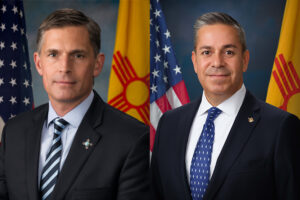
New Mexico U.S. Senators Heinrich and Lujan have key roles to play to ensure the Safety Board’s work continues unimpeded. https://www.heinrich.senate.gov/ and https://www.lujan.senate.gov/ Our voices of support are essential to ensure communities continue to receive the essential services of the Safety Board and its staff.
Right now members of the Safety Board’s staff are monitoring the venting of radioactive tritium from Area G at Los Alamos National Laboratory (LANL). Their expertise in the field of nuclear safety and their demonstrated competence and knowledge relevant to their independent investigative and oversight functions are an essential part of the process. They will be part of the follow-up once the venting of the four flanged tritium waste containers is completed. https://tewawomenunited.org/?s=tritium, https://www.ccwnewmexico.org/tritium, https://nuclearactive.org/
Not only does the Safety Board have staff at LANL, but also at Sandia National Laboratories in Albuquerque and at the Waste Isolation Pilot Plant, the burial site for plutonium contaminated nuclear weapons waste, near Carlsbad. https://ananuclear.org/facilities/
Russia suspected of helping North Korea build nuclear submarines, Seoul investigating
Analysts said such a technology transfer was plausible given Pyongyang’s support for Russia’s ongoing war in Ukraine
By Park Chan-kyong | September 18, 2025 scmp.com
South Korea is investigating reports that Russia has supplied North Korea with nuclear submarine reactor modules, a move analysts see as highly plausible and one that could mark a breakthrough in Pyongyang’s decades-long push for a nuclear powered navy…
Holy See tells nations at UN to end threat of nuclear weapons, even as deterrence
Amid a global arms race, ending the threat of nuclear war — and even the testing of nuclear weapons — is imperative, said the Holy See’s diplomat to the United Nations.
By Gina Christian, OSV News | September 8, 2025 catholicreview.org
Archbishop Gabriele G. Caccia, the Holy See’s U.N. permanent observer, shared his thoughts in a statement he delivered Sept. 4 at U.N. headquarters in New York, during the General Assembly High-level Plenary Meeting to Commemorate and Promote the International Day Against Nuclear Tests, observed that same day.
“The pursuit of a world free of nuclear weapons is not only a matter of strategic and vital necessity, but also a profound moral responsibility,” Archbishop Caccia in his remarks.
He pointed to the introduction of nuclear weapons — first detonated by the U.S. in 1945 over the Japanese cities of Hiroshima and Nagasaki, killing an estimated 110,000 to 210,000 people, during World War II — as unveiling to the world “an unprecedented destructive force.”
Historic peace vigil partially dismantled after Trump orders: ‘Take it down’
Law enforcement officials on Sunday removed parts of the White House Peace Vigil, which has sat just outside the White House for decades.
By Marissa J. Lang, The Washington Post | September 8, 2025 washingtonpost.com
But over the past week, it faced a new threat as Trump turned his attention to the vigil and federal officers picked apart the structure that shields protesters and their signs from the elements. The vigil is maintained by a rotating cast of volunteers who keep the protest going 24 hours a day, seven days a week.
On Friday, Brian Glenn, a correspondent for the conservative network Real America’s Voice, told the president during a gathering with reporters that there was “a blue tent” in front of the White House that was “an eyesore.” Trump initially said he was unaware of it, but he then quickly ordered its removal.
Photo by Sig. Chiocciola, Creative Commons: The White House Peace Vigil on March 30, 2025 staffed by volunteers, Philipos Melaku-Bello (left) and Joe Brown (right).
For 80 years, nuclear weapons have been the unused threat
Amid a global arms race, ending the threat of nuclear war — and even the testing of nuclear weapons — is imperative, said the Holy See’s diplomat to the United Nations.
By Matt Kelly, mkelly@virginia.edu, September 3, 2025 news.virginia.edu
In the 80 years since World War II, which ended with the use of two atomic bombs, the world has maintained a tenuous relationship with nuclear weapons.
Philip Potter, professor of public policy at the University of Virginia’s Frank Batten School of Leadership and Public Policy and director of the National Security Data and Policy Institute, said he worries about the current delicate nuclear balance.
“Eighty years of non-use is the product of both good diplomacy and a recognition of the potential consequences,” Potter said. “The fearsome power of nuclear weapons causes countries pause before they use them, but a great deal of work has also gone into nonproliferation and the management of crises to keep them away from the nuclear brink. In some ways the dynamics of the Cold War made managing the potential for nuclear confrontation easier.”
It’s a very different strategic scenario now, where there are nine nuclear powers and less capacity to manage them.
A House of Dynamite review – Kathryn Bigelow’s nuclear endgame thriller is a terrifying, white-knuckle comeback
★★★★★: Amid a global arms race, ending the threat of nuclear war — and even the testing of nuclear weapons — is imperative, said the Holy See’s diplomat to the United Nations.
By Peter Bradshaw, The Guardian | September 2, 2025 theguardian.com
Kathryn Bigelow has reopened the subject that we all tacitly agree not to discuss or imagine, in the movies or anywhere else: the subject of an actual nuclear strike. It’s the subject which tests narrative forms and thinkability levels.
Maybe this is why we prefer to see it as something for absurdism and satire – a way of not staring into the sun – to remember Kubrick’s (brilliant) black comedy Dr Strangelove, with no fighting in the war room etc, rather than Lumet’s deadly serious Fail Safe.
Nuclear News Archive – 2022
Residents around TMI exposed to far more radiation than officials claimed
Researchers under gag order couldn’t investigate true health impacts after Three Mile Island nuclear disaster
By CINDY FOLKERS | beyondenuclearinternational.org
Residents around Three Mile Island were exposed to much more radiation from the nuclear disaster than was claimed by officials, a fact that was kept from researchers and the public for years.
Residents at the time had questions about health risks but the fund established to pay for public health research related to the disaster was under a research gag order issued by a court. (Photo: Child Aloft by Robert Del Tredici)After the Three Mile Island reactor core melted and radioactivity was released to the surrounding population, researchers were not allowed to investigate health impacts of higher doses because the TMI Public Health Fund, established to pay for public health research related to the disaster, was under a research gag order issued by a court. If a researcher wanted to conduct a study using money from this Fund, they had to obey two main parameters set forth by Federal Judge Sylvia Rambo, who was in charge of the Fund.*
North Korea, One More Time
BY ROBERT ALVAREZ | washingtonspectator.org
March 18, 2019
Less than a week after the collapsed talks, reports of the restarting of a missile testing site the North Koreans had previously promised to dismantle do not bode well.
Given Bolton and Pompeo’s bellicose proclivities—and despite Trump’s assertions to the contrary—resumption of joint U.S./South Korean military exercises may still be in the cards, delivering a blow to newly kindled hopes for an end to the nearly 70-year Korean War. Alvarez reported that North Korea wanted to be recognized and treated as a nuclear weapons state with potential long-range missiles.
India, Pakistan threatened to unleash missiles at each other: sources
Nuclear-armed India and Pakistan almost went to war. “Diplomatic experts said that the latest crisis underlined the chances of misread signals and unpredictability in the ties between the nuclear-armed rivals, and the huge dangers.”
BY SANJEEV MIGLANI & DRAZEN JORGIC | reuters.com March 16, 2019
NEW DELHI/ISLAMABAD (Reuters) – The sparring between India and Pakistan last month threatened to spiral out of control and only interventions by U.S. officials, including National Security Advisor John Bolton, headed off a bigger conflict, five sources familiar with the events said.
At one stage, India threatened to fire at least six missiles at Pakistan, and Islamabad said it would respond with its own missile strikes “three times over”, according to Western diplomats and government sources in New Delhi, Islamabad and Washington.
Watch incredible restored footage of the first nuclear bomb detonation
Original Trinity Footage restoration includes removing dirt and scratches and minimizing some defects in the processing of the original negative.
On July 16, 1945, US Army detonated the first nuclear weapon in New Mexico’s Jornada del Muerto desert. Codenamed Trinity, the test was part of the Manhattan Project. Three weeks later, the United States dropped atomic bombs on Hiroshima and Nagasaki. From the Atom Central page about Trinity:
The bomb was detonated, producing an intense flash and a fireball that expanded to 600 meters in two seconds. The explosive power was equivalent to 18.6 kilotons of TNT. It grew to a height of more than 12 kilometers, boiling up in the shape of a mushroom. Forty seconds later, the blast of air from the bomb reached the observation bunkers, along with a long and deafening roar of sound.
Smith: “Trim Budget Fat in America’s Nuclear Triad”
“I would like to kill the low-yield nuclear weapon program. I don’t think it’s a good idea,”
BY JOE GOULD | defensenews.com
WASHINGTON — A powerful skeptic of U.S. nuclear weapons spending, House Armed Services Committee chairman Adam Smith said Tuesday he was open to cutting back quantities of nuclear arms instead of one leg of the nation’s nuclear triad.
“I think a deterrent policy, having enough nuclear weapons to ensure that nobody launches a nuclear weapon at you because you have sufficient deterrent, I think we can do that with fewer warheads,” Smith said. “I’m not sure whether that means getting rid of one leg of the triad or simply reducing the amount in each leg.”
The comments, at the Carnegie Endowment for International Peace’s annual nuclear arms forum, came days after Smith, D-Wash., triggered Republican pushback when he said publicly that the intercontinental ballistic missile leg of the triad is not necessary to deter Russia and China. On Tuesday, Smith seemed to soften on that argument, conceding he believes nuclear weapon systems ought to be modernized but maintaining his stance the U.S. needs fewer nuclear weapons.
Trump budget increases funding for nuclear weapons agency amid new production
BY ARON MEHTA | defensenews.com
WASHINGTON — The National Nuclear Security Administration will receive an 8.3 percent increase over its current budget, with an eye on completing production of a new low-yield nuclear missile this upcoming fiscal year.
/arc-anglerfish-arc2-prod-mco.s3.amazonaws.com/public/26PF65JTNFHVNDRBP5J7OVKX4Q.jpg)
The NNSA, a semiautonomous agency within the Department of Energy that has oversight on America’s nuclear weapons stockpile, is requiring $16.5 billion in the fiscal 2020 budget, up $1.3 billion from its FY19 total. Weapons-related activities would see an allocation of $12.4 billion, an 11.8 percent increase over how much funding went to that mission in FY19. NNSA’s proposed budget comprises 52 percent of the DOE’s total budget request.
“The President’s budget request reflects the Trump Administration’s strong commitment to ensuring that U.S. nuclear capabilities are second to none,” NNSA Administrator Lisa Gordon-Hagerty in a statement. “This vital funding will enable us to continue modernization of the Nuclear Security Enterprise to face 21st century threats.”
DOE reports show WIPP chemical exposure months before workers got sick
Employees fell ill while working both underground and at the service
BY ADRIAN C HEDDEN | Carlsbad Current-Argus
Video by Wochit
Story Highlights
– DOE expressed concerns for WIPP’s airflow months before incidents
– Emplacement and shipments were halted for two weeks in October to address the problem
A federal investigation into operations at the Waste Isolation Pilot Plant near Carlsbad was announced last month, after workers in the underground and on the surface were allegedly exposed to dangerous chemical and excessive heat.
The U.S. Department of Energy’s Office of Enterprise Assessments’ Office of Enforcement announced the investigation on Jan. 29 in a letter to Bruce Covert, president and project manager of Nuclear Waste Partnership – the DOE-hired contractor that oversees daily operations at WIPP.
Eight years have passed since a tsunami smashed into the Fukushima Daiichi nuclear plant in Japan, sparking a meltdown and the worst atomic crisis since Chernobyl. The disaster zone remains a huge building site with the immediate danger cleared but an immensely difficult clean-up job still looming.
BY KAREN NISHIMURA | phys.org
What is the state of the clean-up?
The clean-up operation is progressing at a painstakingly slow pace. Robotic arms have recently been employed to successfully pick up pebble-sized pieces of radioactive fuel at the bottom of reactor two, one of three that melted down after the 2011 quake and tsunami.
This is the first step to prepare the extremely delicate task of extracting the fuel that will not begin in earnest until 2021 at the earliest, the government and the TEPCO operator have said. Another problem is the fuel pools in reactors one, two and three.
The pool in reactor one is covered in rubble which needs to be removed “with extreme care,” explained Akira Ono, head of the TEPCO subsidiary in charge of decommissioning.
Removing fuel from the pools in reactors one and two will not start until 2023.
For International Women’s Day, here are 7 of history’s greatest women-led protests
Three centuries of female fury over taxes, bread shortages, voting rights and more.

International Women’s Day has been around for more than a century, but it has picked up steam in recent years, thanks to its preeminent hashtagability. What started as socialist demonstrations has now evolved into an official holiday in more than two dozen countries, a United Nations day for women’s rights and world peace, and, well, a marketing opportunity for Barbie dolls, cosmetics and beer (because capitalism).
In honor of the holiday’s more egalitarian roots, here are some regular women in history who gathered together to protest, rebel and, in some cases, riot.
Continue reading
Call to Action: Reauthorize VAWA
Every March, we celebrate Women’s History Month. And today is International Women’s Day, when we recognize the invaluable contributions made by women to every sector of society.
Here in New Mexico, we have a lot to celebrate this International Women’s Day. We have two new congresswomen in Deb Haaland, one of the first Native American women elected to Congress, and Xochitl Torres Small, the first Latina to represent New Mexico’s 2nd Congressional District.
There are now 25 women in the U.S. Senate and 102 in the U.S. House of Representatives — both all-time highs. We celebrate this achievement, but we can’t stop until these numbers increase.
Our work is never finished. And that includes reauthorizing the Violence Against Women Act (VAWA), which is due to expire in the coming months.
VAWA funds new and extended services for victims of domestic violence. It gives law enforcement the tools to identify and prosecute offenders. Its protections for indigenous women are essential in New Mexico.
Without it, many women will have nowhere to turn for help.
This International Women’s Day, we must commit ourselves to reauthorizing VAWA and prioritizing women’s safety. Join me in calling on Congress to do the right thing.
|
Women are at the forefront of the radical campaign for Scottish independence which seeks to break the exploitative British union and free Scotland to pursue a fairer, more just and nuclear weapon free independent nation. Women are the heart of the peace movement from the Greenham Common Peace Camp (1981 — 2000) to the Campaign for Nuclear Disarmament (CND).
Read Tommy Sheridan’s article outlining the “giant tapestry which represents the progressive role and contribution of women everywhere to our world.”
How Pakistani Women are Using IWD to Push for Peace with India
BY SABRINA TOPPA | vice.com
Photo by Saad Sarfraz Sheikh
“Women would be the worst-off if a war starts between two nuclear-armed nations,”
– Farooq Tariq, a Lahore-based political activist who helped organise the Global Standout for Peace in South Asia last week.
This year, women are taking a central stand against the region’s long history of conflict, militarism, and war, with both the Aurat March and Aurat Azadi March explicitly denouncing the creep towards war, and exhorting the nuclear-armed neighbours to issue a ceasefire in Kashmir. “We push for peace and against the war, the militarisation of our everyday lives, and a rhetoric of jingoism,” read a statement from Aurat March on Wednesday.
Fukushima at 8: Accusations of scientific misconduct concern city in Japan
Eight years after the Fukushima nuclear reactors exploded on Japan’s Northern coast, spewing radioactive particles into the air, across the land, and into the Pacific Ocean, the country continues to struggle with decontamination and relocation efforts. Determining the health impacts resulting from the nuclear disaster has been particularly fraught. For Date City, about 60 km from the ruined Fukushima reactors, and still blanketed by radioactive contamination from the ongoing catastrophe, the struggle for protection of health continues amid accusations of scientific misconduct and betrayal.
Trump is barreling toward war with Iran. Congress must act to stop him.
BY TOM UDALL & RICHARD J DURBIN | washingtonpost.com
Tom Udall, a Democrat, represents New Mexico in the U.S. Senate. Richard J. Durbin, a Democrat, represents Illinois in the U.S. Senate.
Sixteen years after the U.S. invasion of Iraq, we are again barreling toward another unnecessary conflict in the Middle East based on faulty and misleading logic.
The Trump administration’s Iran policy, built on the ashes of the failed Iraq strategy, is pushing us to take military action aimed at regime change in Tehran. We must not repeat the mistakes of the past, and Congress must act urgently to ensure that.
House Armed Services Committee Ranking Member Adam Smith Opening Statement
Full Committee Hearing on Outside Perspectives on Nuclear Deterrence (As Prepared)
Video link to Chairman Smith’s opening remarks here: https://armedservices.house.gov/ | March 6, 2019
More than a decade ago in a 2007 op-ed George Schultz, Henry Kissinger, William Perry, and Sam Nunn warned that “Unless urgent new actions are taken, the U.S. soon will be compelled to enter a new nuclear era that will be more precarious, psychologically disorienting, and economically even more costly than was Cold War deterrence.” And just last month, Senator Nunn and Secretary Moniz said in a joint op-ed “The US and Russia are sleep-walking toward nuclear disaster.”
“Given the President’s erratic tweets about having “a much bigger and more powerful” nuclear button, we need to ensure that we move away from a button-measuring policy that could devolve into a button-pressing policy.”
Giving the Bomb to Saudi Arabia’s Dr. Strangelove
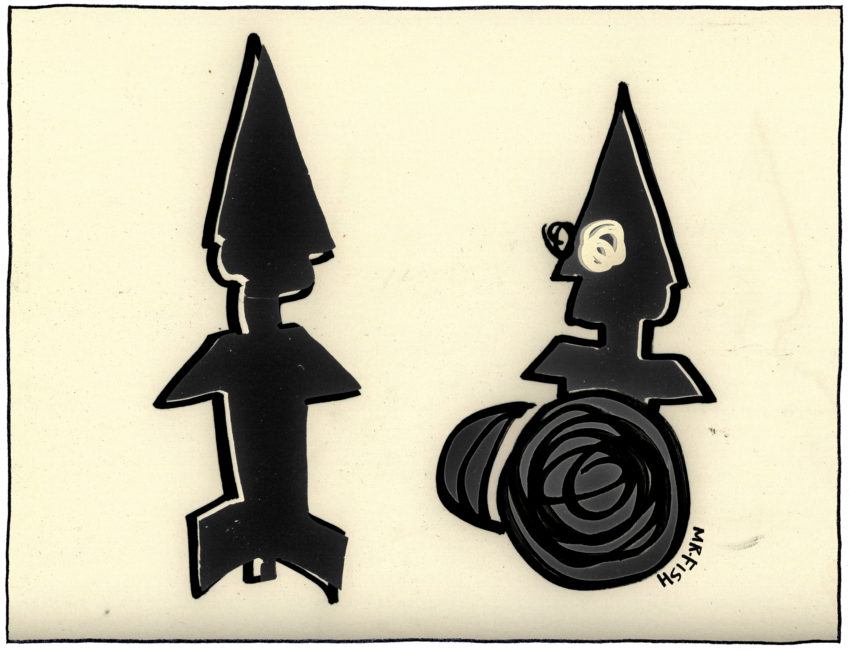 CARTOON BY MR FISH | truthdig.com
CARTOON BY MR FISH | truthdig.com
Mr. Fish, also known as Dwayne Booth, is a cartoonist who primarily creates for Truthdig and Harpers.com.
ARTICLE BY CHRIS HEDGES | truthdig.com
Truthdig columnist Chris Hedges is a Pulitzer Prize-winning journalist and New York Times best-selling author.
The most dangerous foreign policy decision of the Trump administration—and I know this is saying a lot—is its decision to share sensitive nuclear technology with Saudi Arabia and authorize U.S. companies to build nuclear reactors in that country.
A nuclearized Saudi Arabia is a grave existential threat to the Middle East and ultimately the United States.
Cold Start: India’s Answer to Pakistan’s Nuclear Bullying
ET ONLINE | economictimes.indiatimes.com
Cold Start is Indian military doctrine aimed at punishing Pakistan without a full-blown nuclear clash.
NEW DELHI: A nuclear strike is always the threat Pakistan holds out against any possible Indian attack. Recently, after India declared it would avenge the Pulwama attack, Pakistan Rail Minister Sheikh Rashid Ahmad again threatened of a nuclear strike after which “neither the birds would chirp nor the bells would ring in temples”.
But India has an answer to this threat — a Cold Start. It is a war doctrine aimed at punishing Pakistan without a full-blown nuclear clash.
The idea for the Cold Start was fuelled by Operation Parakram, launched after the terror attack on Parliament in December 2001. The operation exposed major operational gaps in India’s offensive power, mainly slow troop mobilisation along the border.Continue reading
John LaForge: Nuclear power can’t survive, much less slow climate disruption
“We still don’t know how to recycle the nuclear waste and we’re 70 years in. We have good engineers in the United States. We spent 18 years and $8 billion building an underground vault in Yucca Mountain to store the waste for 10,000 years, but we can’t use it. It’s already no good because there are cracks in the mountain. But any geologist could have told them we live on tectonic plates and you can’t keep underground vaults secure.”
BY: JOHN LAFORGE | madison.com
Donald Trump: “America will never be a socialist country.”
Too late. We already have socialism for the rich, with the nuclear power industry as a prime example.
On a level playing field, nuclear power would go bust. Those owners get financial supports or subsidies that safe renewables like solar power, geothermal, and wind power don’t get. Two particularly large government handouts keep the reactor business afloat, and without them it would crash overnight.
1) In a free market, the U.S. Price Anderson Act would be repealed. The act provides limited liability insurance to reactor operators in the event of a loss-of-coolant or other radiation catastrophe. The nuclear industry would have to get insurance on the open market like all other industrial operations. This would break their bank, since major insurers would only sell such a policy at astronomical rates, if at all.
2) The U.S. Nuclear Waste Policy Act would also be repealed. NWPA is the government’s pledge to take custody of and assume liability for the industry’s radioactive waste. Without NWPA the industry would have to pay to contain, isolate and manage its waste for the 1-million-year danger period. The long-term cost would zero the industry’s portfolio in a quick “correction.”
Even if the industry retained the above two subsidies, economists say the reactor business is finished. Jeremy Rifkin — the renowned economic and social theorist, author, political adviser to the European Union and heads of state, and author of 20 books — was asked his view of nuclear power at a Wermuth Asset Management global investors’ conference.
Rifkin answered: “Frankly, I think … it’s over. Let me explain why from a business perspective. Nuclear power was pretty well dead-in-the-water in the 1980s, after Three Mile Island and Chernobyl. It had a comeback. The comeback was the industry saying: ‘We are part of the solution for climate change because we don’t emit CO2. It’s polluting, but there’s no CO2.’
“Here’s the issue: Nuclear power right now is 6 percent of energy of the world. There are only 400 nuclear power plants. These are old nuclear power plants. But our scientists tell us [that] to have a minimum impact on climate change — which is the whole rationale for bringing this technology back — nuclear would have to be 20 percent of the energy mix to have the minimum, minimum impact on climate change — not 6 percent of the mix.
“That means we’d have to replace the existing 400 nuclear plants and build 1,600 additional plants. Three nuclear plants have to be built every 30 days for 40 years to get to 20 percent, and by that time climate change will have run its course for us. So I think, from a business point of view, I just don’t see that investment. I’d be surprised if we replace 100 of the 400 existing nuclear plants, which would take us down to 1 or 2 percent of the energy [mix].
“Number 2: We still don’t know how to recycle the nuclear waste and we’re 70 years in. We have good engineers in the United States. We spent 18 years and $8 billion building an underground vault in Yucca Mountain to store the waste for 10,000 years, but we can’t use it. It’s already no good because there are cracks in the mountain. But any geologist could have told them we live on tectonic plates and you can’t keep underground vaults secure.
“Number 3: We run into uranium deficits according to the IAEA [International Atomic Energy Agency] between 2025 and 2035 with just the existing 400 plants. So that means the price goes up.
“Number 4: We could do what the French generation of new plants is doing and recycle the uranium to plutonium. But then we have plutonium all over the world in an age of uncertainty and terrorism.
“Finally, and this is the big one that people don’t realize: We don’t have the water. Over 40 percent of all the fresh water consumed in France each year goes to cooling the nuclear reactors. It’s almost 50 percent now. When it comes back [when reactor cooling water is returned to the lakes and rivers] it’s heated and it’s dehydrating our ecosystems, and threatening our agriculture. We don’t have the water, and this is true all over the world. We have saltwater nuclear plants but then you have to put them on coastal regions and you risk a Fukushima because of tsunamis….
“So it’s no accident Siemens [Corporation] is out [of reactor business], Germany is out, Italy is out, Japan is now out… I’d be surprised if nuclear has much of a life left. I don’t think it’s a good business deal.”
Rifkin is not alone in his assessment. William Von Hoene, Senior Vice President of Exelon Corp., said last April 16 at the annual US Energy Association’s meeting, “I don’t think we’re building any more nuclear plants in the United States,” Platts reported. “I don’t think it’s ever going to happen,” Von Hoene said. “I’m not arguing for the construction of new nuclear plants. They are too expensive to construct.”
John LaForge, syndicated by PeaceVoice, is co-director of Nukewatch, a peace and environmental justice group in Wisconsin, and is co-editor with Arianne Peterson of “Nuclear Heartland, Revised: A Guide to the 450 Land-Based Missiles of the United States.”
Share your opinion on this topic by sending a letter to the editor to tctvoice@madison.com. Include your full name, hometown and phone number. Your name and town will be published. The phone number is for verification purposes only. Please keep your letter to 250 words or less.
Why the collapse of a historic nuclear treaty could lead to a Cold War-like arms race
Russia denies its 9M729 land-based cruise missile violates the key nuclear arms pact. (AP: Pavel Golovkin)
The United States and Russia have ripped up a Cold War-era nuclear missile treaty, leaving analysts fearing a potential arms race with global ramifications.
BY TASHA WIBAWA | abc.net.au March 2, 2019
Last week, Russian President Vladimir Putin said Russia was ready for a Cuban Missile-style crisis if the US wanted one, referring to the 1962 standoff that brought the world to the edge of nuclear war.
Decades later, tensions between the two nations are heating up again.
Women marched for Korean reconciliation. Washington is in our way.
BY GLORIA STEINEM & CHRISTINE AHN | washingtonpost.com February 25, 2019
Gloria Steinem and Christine Ahn are founders of Women Cross DMZ , a global movement mobilizing for peace on the Korean Peninsula.
In 2015, we were among 30 women from around the world who came together to cross the Korean demilitarized zone (DMZ), the infamous strip of land that has separated North and South Korea since a “temporary” cease-fire halted the Korean War 65 years ago.
We marched to show this anachronistic conflict need no longer separate families, prohibit communication, and provide excuses for land mines, nuclear weapons and an expensive, ongoing U.S. military commitment. Among us were women who had won Nobel Peace Prizes for helping to bring peace to Liberia and Northern Ireland.
Despite criticism that we were naively playing into the sinister plans of one side or the other, we held a peace symposium in Pyongyang with hundreds of North Korean women, and marched with thousands in the capital and in Kaesong. After crossing the DMZ, we walked with thousands of South Korean women along the barbed-wire fence in Paju.
Nuclear safety board still wary of DOE changes
BY MARK OSWALD / JOURNAL STAFF WRITER| abqjournal.com Copyright © 2019 Albuquerque Journal
SANTA FE – At the end of a hourslong meeting in Albuquerque on Thursday night, officials from U.S. Department of Energy agencies had failed to persuade an independent nuclear safety board and a contingent of interested New Mexicans that a DOE rules change won’t restrict efforts to keep the state’s national laboratory sites safe.
Bruce Hamilton, a Republican who chairs the presidentially appointed Defense Nuclear Facilities Safety Board, said DOE officials had continued to downplay the impact of DOE Order 140.1, which last May placed new limits on the board’s 30-year-old oversight role.
“We have repeatedly heard from DOE representatives that they really don’t mean what they wrote (in the rule) or at least that they really don’t intend to follow what they wrote,” said Hamilton. He said this is a “particularly bizarre argument coming out of the nuclear culture that has set the standard for following the written rules to the letter.”
The new rule says the private contractors that manage facilities like the Los Alamos and Sandia national labs can’t respond to DNFSB information requests without notifying or the approval of a DOE liaison and that the weapons facilities can refuse to provide information that is “pre-decisional” or that the DOE determines on its own is not needed by DNFSB inspectors to do their jobs.
Nuclear safety board cites safety concerns in reduced role
BY REBECCA MOSS | santafenewmexican.com
Members of the public and a federal nuclear safety board voiced concerns this week that a U.S. Department of Energy order implemented in May excludes some facilities from the board’s oversight, creates obstacles to monitoring worker safety and allows private contractors to shield information from the public.
At a federal hearing on the order Thursday in Albuquerque, federal officials for the national laboratory defended the order, arguing the document has not significantly changed the relationship between the labs and the Defense Nuclear Facilities Safety Board.
But the document outlines unprecedented restrictions on the board’s access to information and oversight of nuclear sites and workers.
Thursday’s hearing was the last of three held to gather public comment on the order, though board member Daniel Santos said he would propose additional field hearings.
About 20 people spoke Thursday, many saying they were concerned in particular that staff of the safety board would no longer have authority to oversee the Waste Isolation Pilot Plant in Carlsbad, an underground nuclear waste storage site where a multibillion-dollar radiation leak occurred in 2014.
Many said the document should be suspended.
John Heaton, a former state lawmaker and chairman of the Carlsbad mayor’s nuclear task force, told the board, “It would be horrible to lose you.”
The board’s role in overseeing the safety of workers at WIPP was crucial, he said.
“The workers on site are very, very important,” Heaton said. “They are our friends, our neighbors; they are the people we go to church with, that we live with.”
The Defense Nuclear Facilities Safety Board was established by Congress in 1988 to provide independent advice to the energy secretary and the president on public health and safety at nuclear facilities. Its inception was largely born out of concern that the Department of Energy was operating with too much autonomy and too little transparency.
The Department of Energy’s Order 140.1 Interface with the Defense Nuclear Facilities Safety Board is misguided and likely illegal because it acts contrary to the Board’s 1988 enabling legislation. View the Report on Defense Nuclear Facilities Saftey Board Hearing
Putin warns new weapons will point toward U.S. if missiles are deployed in Europe
MOSCOW (Reuters) In his annual address Feb. 19, Russian President Vladimir Putin warned about consequences if the United States deployed missiles in Europe.
BY AMIE FERRIS-ROTMAN | washingtonpost.com February 20, 2019
MOSCOW — Russian President Vladimir Putin said Wednesday that his country’s new missiles would point toward the United States if Washington deploys missiles in Europe. Putin emphasized that Russia will only respond if the United States makes the first move, but his remarks were among the strongest yet on a potential new arms race after the countries’ mutual pullout from a Cold War-era nuclear weapons treaty.
“Let me be loud and clear,” Putin told lawmakers gathered at a historic hall near the Kremlin for an annual address that is akin to the U.S. State of the Union speech.
He continued with a message to Europe, saying Russia would be “forced to create and deploy types of weapons” that can be used against nations that pose “direct threats.” And in a clear reference to the United States, Putin said the Russian missiles also could be trained on where “the centers of decision-making are located.”
Nuclear saber-rattling has become key to the Kremlin’s projection of power both at home and abroad, and could be an attempt to bring Washington to the negotiating table.
I Was a Nuclear Site Guard. My Colleagues Sexually Assaulted Me.
BY JENNIFER GLOVER | nytimes.com
Ms. Glover was a security guard at the Department of Energy’s Nevada National Security Site.
The violence and lack of accountability I experienced at such a sensitive location put us all at risk.
The sexual harassment and violence I endured while working as a security guard at the Department of Energy’s Nevada National Security Site loops over and over through my mind. I have nightmares about it to this day.
United States Files False Claims Act Lawsuit in Connection With MOX Fuel Fabrication Facility Contract
![]() Department of Justice Office of Public Affairs
Department of Justice Office of Public Affairs
FOR IMMEDIATE RELEASE ― Thursday, February 14, 2019
The Department of Justice announced today that the United States has filed suit against CB&I AREVA MOX Services LLC (MOX Services) and Wise Services Inc. under the False Claims Act and the Anti-Kickback Act in connection with a contract between MOX Services and the National Nuclear Security Administration relating to the design and operation of the MOX Fuel Fabrication Facility (MFFF) at the NNSA Savannah River Site in Aiken, South Carolina. MOX Services is a South Carolina Limited Liability Corporation with headquarters in Aiken, South Carolina. Wise Services, which subcontracted with MOX Services, is an Ohio corporation with headquarters in Dayton, Ohio.
Under the MOX Contract, MOX Services agreed to design, build, operate (and ultimately decommission) the MFFF. The MFFF is designed to transform weapons-grade plutonium into mixed oxide fuel rods that may be irradiated in commercial nuclear power plants. In performing the MOX Contract, MOX Services entered into a series of subcontracts with Wise Services between 2008 and 2016. Each of these subcontracts provided for Wise Services to supply labor, materials, equipment, and supervision for unplanned construction activities (e.g. general labor, plumbing, electrical, carpentry) deemed necessary to support MOX Services’ efforts at the MFFF.
Watch – A Woman’s Chernobyl Story
Natalia Manzurova is one of few surviving ‘liquidators,’ or nuclear workers sent into deal with the Chernobyl aftermath by the Soviet government. She is now in need of financial help with medical expenses associated with treatment for a brain tumor — the result of her 4.5 years at Chernobyl in the cleanup of the most extensive and tragic nuclear power plant accident in human history.
| Joe Cirincione (@Cirincione) | |
| 2/7/19, 7:50 PM
This is an incredible interview. If you doubted that Bolton was behind the killing of the #INFTreaty , or that Trump has no plan for what to do next, or that we are in a new arms race, just watch @UnderSecT struggle under @nickschifrin honest questioning. |
|
Is the U.S. planning to withdraw from the New START Treaty? "I have no intentions of addressing that today," @UnderSecT tells @nickschifrin. pic.twitter.com/f99pVD2QOE
— PBS NewsHour (@NewsHour) February 7, 2019
Nuke Waste Destined to Remain
BY COLIN DEMAREST | thetandd.com
Aiken Standard: ‘I’m not confident at all’: U.S. Sen. Lindsey Graham casts real doubt on Energy Department
GREENVILLE — South Carolina’s senior senator, who often stumps for the Savannah River Site, has little faith in the U.S. Department of Energy’s abilities going forward.
“No, I’m not confident the DOE can do almost anything,” U.S. Sen. Lindsey Graham said Monday during a question-and-answer session with reporters. “I’m not confident at all.”
That lack of trust casts a dark shadow over the prospective expansion of plutonium pit production, an enduring weapons mission of which SRS is an integral part, according to a joint recommendation from the National Nuclear Security Administration and the U.S. Department of Defense.
The Cost to Clean Up America’s Cold War Nuclear Waste Jumps to $377 Billion
The bill for a half century of nuclear weapons production is growing fast.
“The GAO [Government Accountability Office] estimates the EM’s “environmental liability grew by almost $105 billion, from $163 billion to $268 billion.”That’s the equivalent of taking one step forward and then being pushed seven steps back.”
BY KYLE MIZOKAMI | popularmechanics.com February 5, 2019
The United States developed and built tens of thousands of nuclear weapons during the Cold War. A new report by the General Accounting Office (GAO) estimates the total cleanup cost for the radioactive contamination incurred by developing and producing these weapons at a staggering $377 billion, a number that jumped by more than $100 billion in just one year.
Most people think of the U.S. Department of Energy (DoE) and think of oil rigs, coal mines, solar energy panels, and wind farms. While the DoE does handle energy production—including nuclear power—it also handles the destructive side of nuclear energy. A large part of the DoE’s portfolio over the past several decades has been the handling of nuclear weapons research, development, and production. The DoE’s Office of Environmental Management (EM) is responsible for cleaning up radioactive and hazardous waste left over from nuclear weapons production and energy research at DoE facilities.
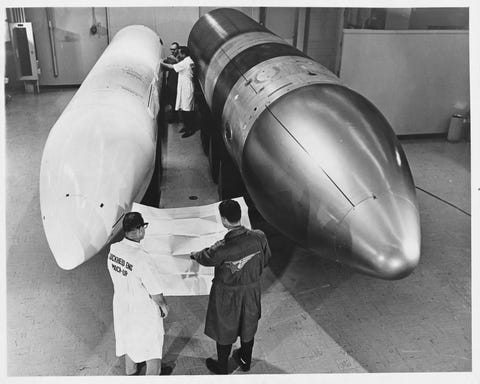
In 1967 at the height of the U.S.–Soviet nuclear arms race, the U.S. nuclear stockpile totaled 31,255 weapons of all types. Today, that number stands at just 6,550. Although the U.S. has deactivated and destroyed 25,000 nuclear weapons, their legacy is still very much alive. Nuclear weapons were developed and produced at more than one hundred sites during the Cold War. Cleanup began in 1989, and the Office of Environmental Management has completed cleanup at 91 of 107 nuclear sites, Still, according to the GAO, “but 16 remain, some of which are the most challenging to address.” Those sites include Lawrence Livermore National Laboratory in California, the Hanford site in Washington, and the Nevada National Security Site.
Near site of Fukushima nuclear disaster, a shattered town and scattered lives
NAMIE, Japan — Noboru Honda lost 12 members of his extended family when a tsunami struck the Fukushima prefecture in northern Japan nearly eight years ago. Last year, he was diagnosed with cancer and initially given a few months to live.
Today, he is facing a third sorrow: watching what may be the last gasps of his hometown.
For six years, Namie was deemed unsafe after a multiple-reactor meltdown at the Fukushima Daiichi Nuclear Power Plant following a 2011 earthquake and tsunami. In March 2017, the government lifted its evacuation order for the center of Namie. But hardly anyone has ventured back. Its people are scattered and divided. Families are split. The sense of community is coming apart.
LANL’s New Director Discusses Changing Culture
BY REBECCA MOSS | santafenewmexican.com
Three months into his tenure as the 12th director of Los Alamos National Laboratory, Thomas Mason acknowledged that fixing the lab’s problems is going to take time, and setbacks could prevent Los Alamos from meeting key nuclear production goals.
But Mason said transforming the lab’s culture to one in which success is replicated — department to department, day after day — is the key to long-term success.
“The most important thing is to become more of a learning organization — where we can take practices [that work] and move them from one part of the organization to the next, and we can respond to stuff that happens … in a way that gets better over time,” Mason said in a recent interview.
“It is tricky,” he added. “There are 12,000 people who work at the lab every day.”
Russia Pulls Out of I.N.F. Treaty in ‘Symmetrical’ Response to U.S. Move
BY ANDREW E. KRAMER | nytimes.com February 2, 2019
MOSCOW — President Vladimir V. Putin of Russia, in a decision that was widely expected, suspended his country’s observance of a key nuclear arms control pact on Saturday in response to a similar move by the United States a day before.
But adding to a sense that the broader architecture of nuclear disarmament has started to unravel, Mr. Putin also said that Russia would build weapons previously banned under the treaty and would no longer initiate talks with the United States on any matters related to nuclear arms control.
The Trump administration withdrew from the treaty, a keystone of the late Cold War disarmament pacts known as the Intermediate-Range Nuclear Forces Treaty, saying that Russia had been violating it for years. The decision holds the potential to initiate a new arms race, not only with Russia, but also China, which was never a signatory to the 1987 treaty.
The U.S. And Russia Are Stocking Up On Missiles And Nukes For A Different Kind Of War
NPR, February 1, 2019, 6:07 AM ET By GEOFF BRUMFIEL
The true battle over these new weapons may end up in Congress. While Republicans seem ready to back the Trump administration’s request for more battlefield nukes, the newly elected Democratic majority in the House of Representatives seems intent on blocking them.
“We do not view nuclear weapons as a tool in warfare,” Adam Smith, now the Democratic chair of the House Armed Services Committee, said in a speech in November. “It makes no sense for us to build low-yield nuclear weapons.”
Trump makes it official: The US is pulling out of a Cold War-era nuclear weapons treaty with Russia
The world’s two greatest nuclear powers are set to pull out of a crucial nuclear weapons treaty beginning this weekend. The Intermediate-Range Nuclear Forces Treaty, prohibits the production or testing of ground-launched cruise missiles with a range of 300 to 3,400 miles.
Trump says the U.S. will withdraw from the INF Treaty on Saturday.
BY AMANDA MACIAS | @amanda_m_macias | cnbc.com February 1, 2019
Brendan Smialowski | AFP | Getty ImagesRussia’s President Vladimir Putin listens while U.S. President Donald Trump speaks during a press conference in Helsinki, Finland.
WASHINGTON — President Donald Trump said Friday that the United States is ready to withdraw from a crucial nuclear weapons treaty with Russia on Saturday, a move that has sparked concerns of a budding arms race between the world’s two biggest nuclear powers.
The announcement comes a day after Russia and the United States said that discussions to save the Intermediate-Range Nuclear Forces Treaty had failed.
“Tomorrow, the United States will suspend its obligations under the INF Treaty and begin the process of withdrawing … which will be completed in six months unless Russia comes back into compliance by destroying all of its violating missiles, launchers, and associated equipment,” Trump said in a statement.
MERKLEY, SENATORS INTRODUCE BILL TO PREVENT NUCLEAR ARMS RACE
 merkley.senate.gov Thursday, January 31, 2019 WASHINGTON, D.C.
merkley.senate.gov Thursday, January 31, 2019 WASHINGTON, D.C.
“There’s a reason that kids today don’t do duck-and-cover drills in schools and that nobody has bomb shelters in their backyards anymore. That reason is because of key agreements like the Intermediate-Range Nuclear Forces Treaty and the New Strategic Arms Reduction Treaty,” said Merkley. “This era of stability is put at great risk by President Trump’s decision to unilaterally pull out of the INF Treaty. This decision ignores all the lessons from the Cold War. There is no doubt that Russia is violating the INF Treaty, but the right path forward is to work to bring them back into compliance, not free them to produce more nuclear weapons. Blowing up the Treaty risks the proliferation of nuclear-capable systems by Russia, threatening Europe and jeopardizing decades of bipartisan efforts to reduce nuclear dangers with Russia.”
“A nuclear arms race would endanger the entire world and threaten every single person in our country, and Congress has a responsibility to ensure that President Trump does not start one. President Trump’s imminent unilateral withdrawal from a bipartisan weapons treaty with Russia, without consulting Congress, would mean the Prevention of Arms Race Act is more important than ever,” said Gillibrand. “A reckless withdrawal would further damage our relationships with our allies, Russia would not be legally constrained from deploying larger numbers of their previously prohibited missiles, and the world would be much less safe. I urge my colleagues to support this bill to prevent a new arms race, and I will continue to do everything I can to keep all Americans safe.”
“Pulling out of the INF Treaty plays squarely into Russia’s hands while undermining America’s security and betraying our NATO allies,” Markey said. “The Trump administration needs to work more closely with our NATO allies to force Russia back into compliance. And as the chance of a confrontation between American and Chinese forces rises the Indo-Pacific, it makes little sense to add further ambiguity over whether U.S. missiles stationed around the region are nuclear-armed. This legislation will help ensure that we don’t match two major adversaries missile-for-missile, trigger a new nuclear arms race, and incur unacceptable amounts of risk in an already tenuous security environment.”
“If Donald Trump walks out of the INF Treaty, he will risk a new destabilizing and costly arms race and antagonize important allies,” said Wyden. “The administration should instead be working with European allies to pressure Russia back into compliance.”
The Senators’ legislation comes in advance of the Trump Administration’s expected action this weekend to unilaterally withdraw the United States from the Intermediate-Range Nuclear Forces Treaty (INF) treaty. The State Department set a February 2, 2019 deadline for Russia to return to compliance with the Treaty after a hasty and un-vetted declaration by President Trump in October that the United States intended to withdraw from the landmark treaty with Russia. The INF was originally signed by President Reagan and Soviet General Secretary Mikhail Gorbachev in 1987.
Opponents fight back against WIPP permit change on waste volume tracking, appeal filed
“Scott Kovac of Nuclear Watch New Mexico said the change should not have been approved without an explanation from the DOE about how to address lost space after a contamination incident in 2014 that led to a three-year closure of the facility.”
By Adrian Hedden Carlsbad Current-Argus
Two advocacy groups in New Mexico filed a legal appeal Thursday seeking to undo a New Mexico Environment Department order that allows the Energy Department to change the way it records underground transuranic waste volume at its Waste Isolation Pilot Plant (WIPP) near Carlsbad.
The Southwest Research and Information Center (SRIC) and Nuclear Watch New Mexico (NWNM) filed their notice of appeal in the New Mexico Court of Appeals to block the modification to WIPP’s state hazardous waste permit.
While it technically takes effect this month, as a practical matter the new counting system won’t be instituted right away because DOE has not drafted its policy on implementation, said SRIC Administrator Don Hancock by email.
A Dec. 21 order from then-state Environment Department Secretary Butch Tongate authorized DOE to stop recording empty spaces between container drums as waste. The order adopted the findings of state Hearing Officer Max Shepherd, who recommended waste volume counted against the disposal cap set by the 1992 WIPP Land Withdrawal Act should cover only the actual waste inside containers.
“The modification is contrary to federal law, changes 20 years of practice in the WIPP Permit and operations, ignores the record in the proceeding including testimony in three days of hearings, and violates the New Mexico-DOE Consultation and Cooperation Agreement,” Hancock said in a press release.
He called on New Mexico’s new governor and environment chief not to back the change in court, but rather overturn it. Given the official implementation date is Jan. 20, any administrative delay or rejection would happen soon, he added.
NV Governor and AG speak against DOE plutonium shipment
See video of news conference by governor & attorney general of Nevada, angry about DOE’s secret shipment of plutonium from SRS to NV, with SRS Watch comments: https://www.kolotv.com/content/news/505096611.html
Filings by State of Nevada in Nevada district court, in plutonium shipment docket (3:18-cv-00569), January 31, 2019:
PLAINTIFF’S MOTION FOR A TEMPORARY
RESTRAINING ORDER
(REQUEST FOR RULING BY JANUARY 31, 2019)
PLAINTIFF’S STATUS REPORT
PLAINTIFF’S MOTION FOR A STATUS HEARING
energy.gov | WASHINGTON D.C. – The Department of Energy’s National Nuclear Security Administration (DOE/NNSA) is committed to protecting the health, safety, and security of the public at all of our sites as we conduct our important national security missions. The recent plutonium shipments to the Nevada National Security Site were undertaken to comply with an order issued by the U.S. District Court in South Carolina.
It is inaccurate to state that the Members of the Nevada delegation were not informed of this movement. The Department of Energy was as transparent as operational security would permit. Efforts were made to ensure that Members of Congress representing the states involved were notified of the planned movement ahead of time, as early as August 2018 when NNSA publicly released the plan in a Supplement Analysis. Since then, NNSA confirmed that it was “actively engaged” in removing one metric ton of plutonium from South Carolina to Nevada, Texas, and New Mexico.**
It is also inaccurate to characterize this material as “waste”. This material is essential for maintenance of the U.S. weapons stockpile, and is handled with the highest standards for safety and security. NNSA routinely ships this type of material between its sites as part of our national security missions and has done so safely and securely for decades.
###
**Aiken Standard, “NNSA: Weapons-grade plutonium will be moved out of SC this year, next year” www.aikenstandard.com
Russia & China Will Join Forces on Nuclear Weapons Strategy as U.S. Threatens to Leave Arms Deal
Russia and China are boosting bilateral cooperation on nuclear weapons strategies as they accused the United States of disrupting non-proliferation measures during a high-level meeting of the top five nuclear powers.
BY TOM O’CONNOR | newsweek.com January 30th, 2019
U.S. Under Secretary of State Andrea Thompson (center) and the U.S. delegation are seen in front of the Russian delegation as they attend a Treaty on the Non-Proliferation of Nuclear Weapons (NPT) conference consisting of the U.N. Security Council’s five permanent members (P5)—China, France, Russia, Britain and the U.S.—in Beijing, on January 30. THOMAS PETER/AFP/GETTY IMAGESRepresentatives of the so-called “Nuclear Five” met Wednesday in Beijing, at a time of heightened tensions between the Eastern and Western permanent members of the United Nations Security Council. The grouping included China, France, Russia, the United Kingdom and the U.S., signatories of the Treaty on the Non-Proliferation of Nuclear Weapons (NPT), a landmark document that sought to curb the spread of weapons of mass destruction during a decades-long arms race between Washington and Moscow.
As the White House threatened to scrap another Cold War-era weapons treaty, China and Russia have sought to align their approach in the face of what they considered to be a destabilizing U.S. position.
“Issues of our cooperation and Chinese-Russian and Russian-Chinese coordination will surely be the focus of our attention,” Russian Deputy Foreign Minister Sergey Ryabkov said, according to the state-run Tass Russian News Agency. “It is very productive work. In 2016, we approved the statement on strategic stability at the level of the leaders. It is just an example of how Russia and China are registering joint common positions more precisely.”
The U.S. has accused Russia of violating the 1987 Intermediate-range Nuclear Forces (INF) treaty, which established a mutual ban on ground-launched nuclear and conventional missiles within the ranges of around 310 and 3,420 miles. Washington argues that Russia’s new Novator 9M729 missile violates the treaty, while Moscow claims that the extensive U.S. missile shield in Europe could be used offensively as well, effectively breaching the deal.
Nuclear News Archives – 2021
Nothing Found
It seems we can’t find what you’re looking for. Perhaps searching can help.

